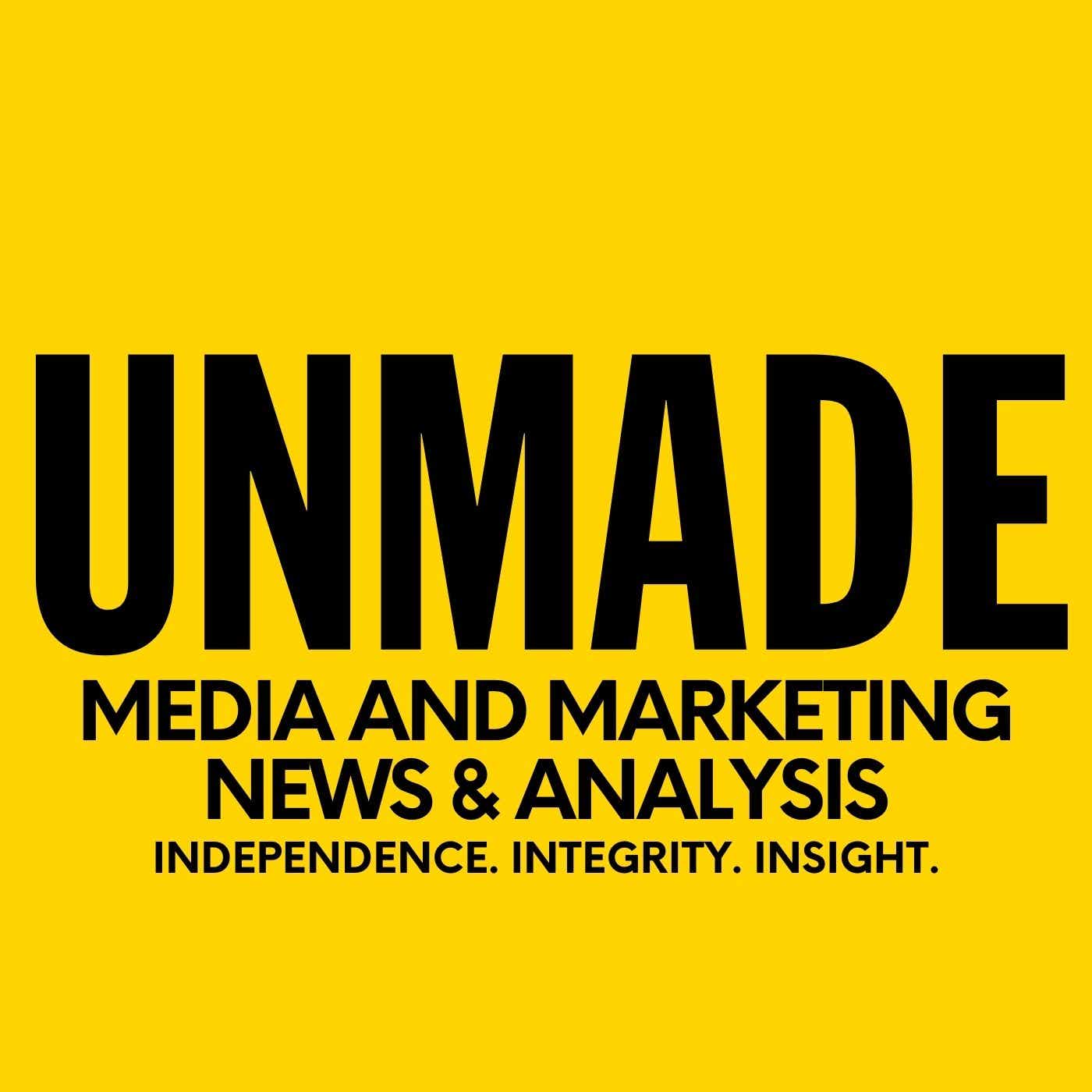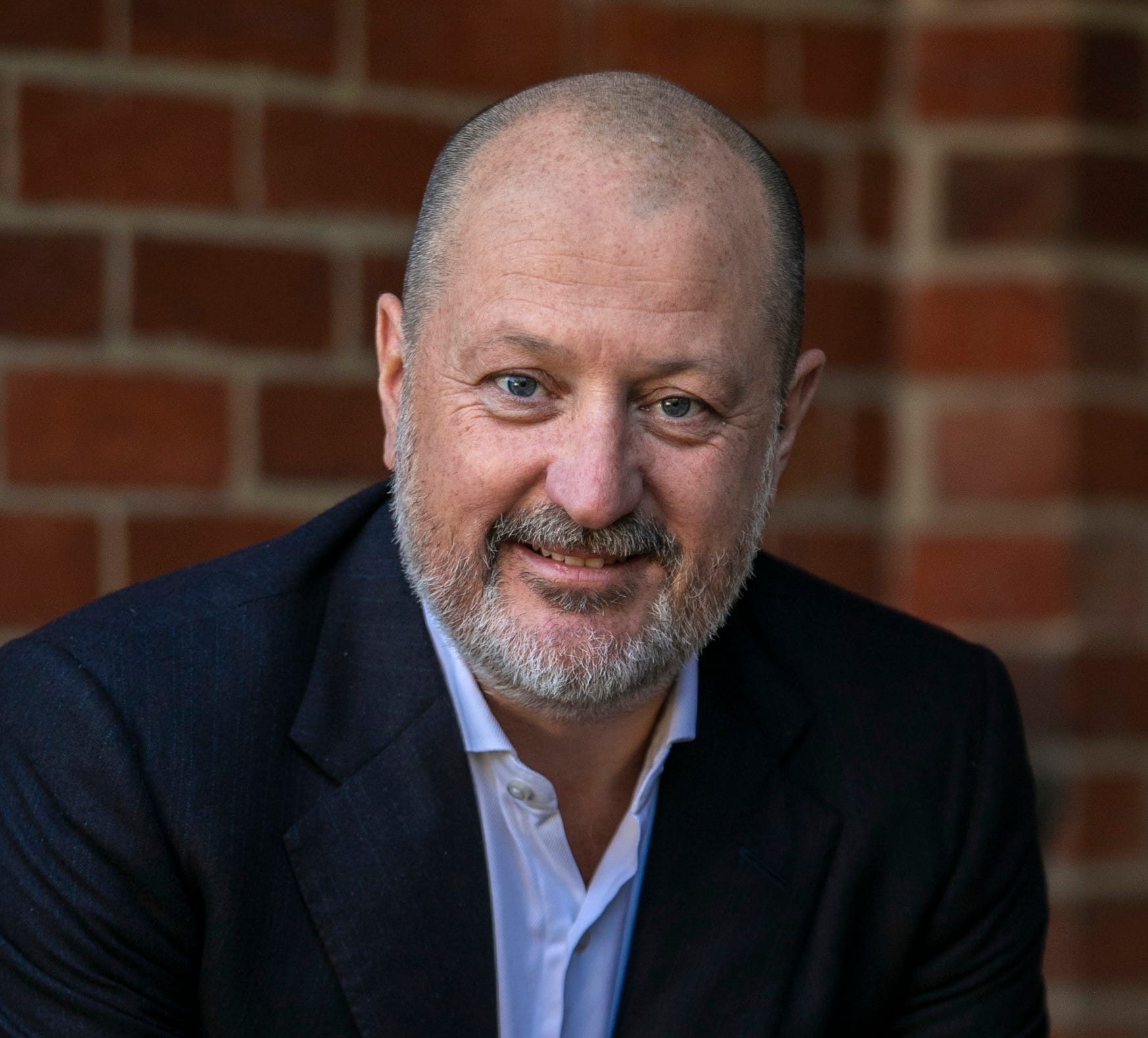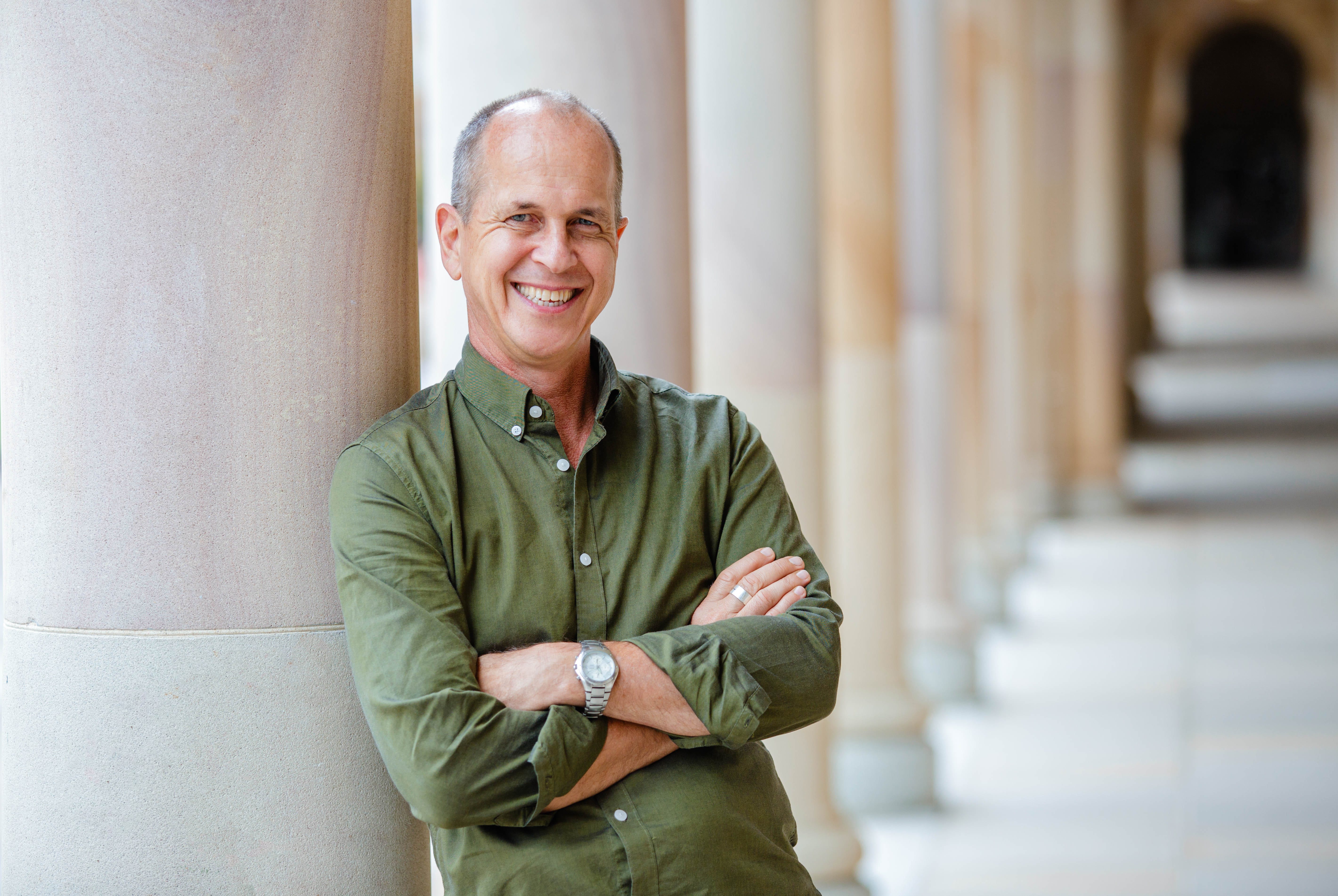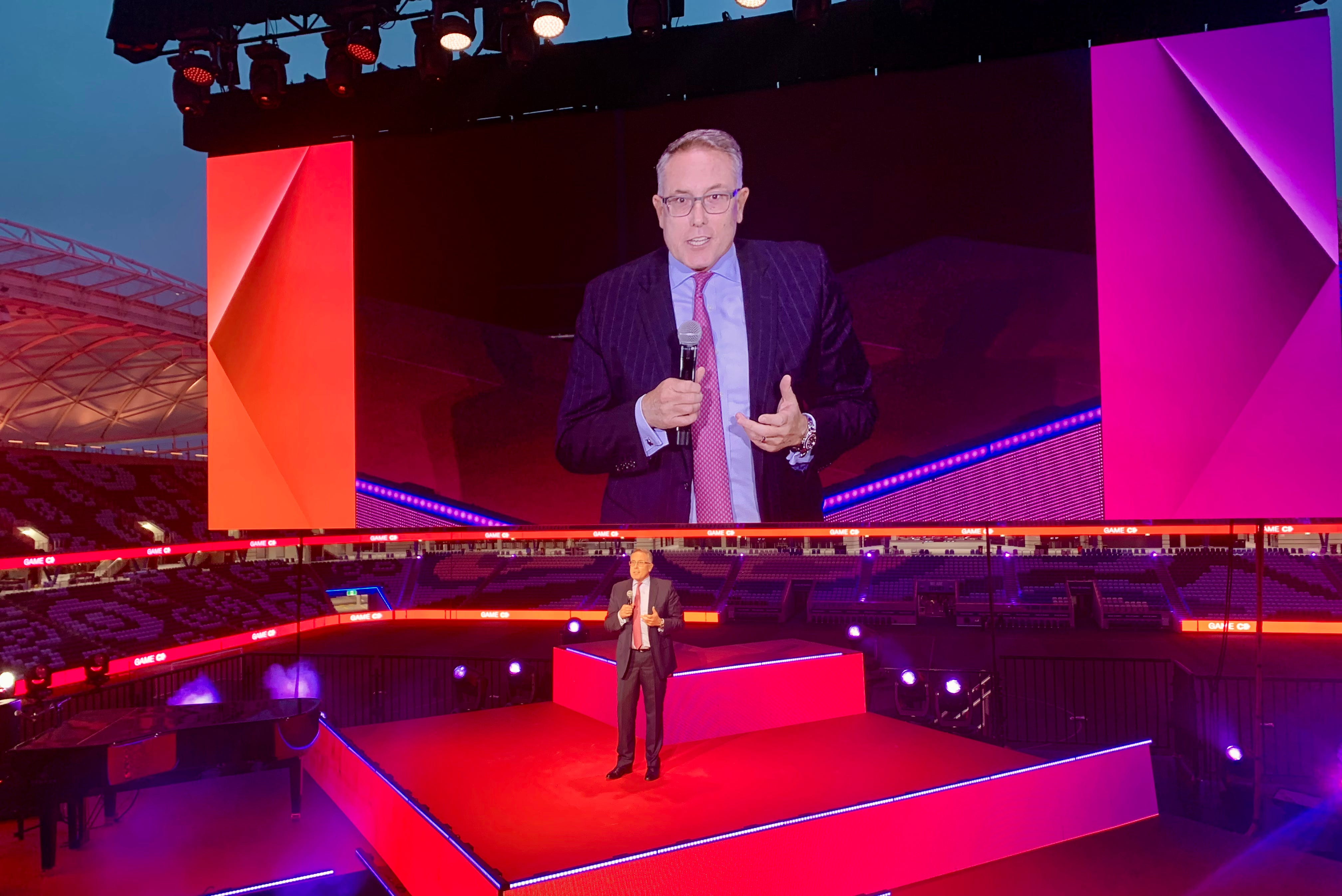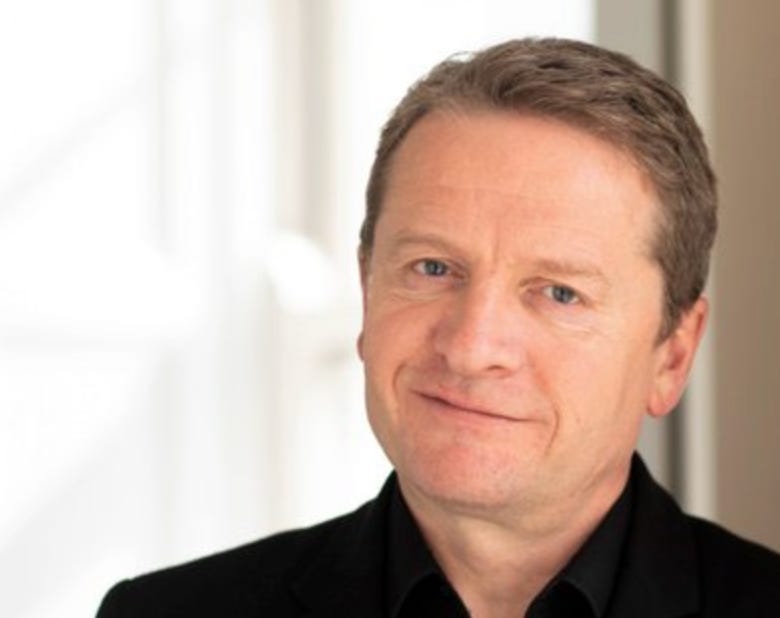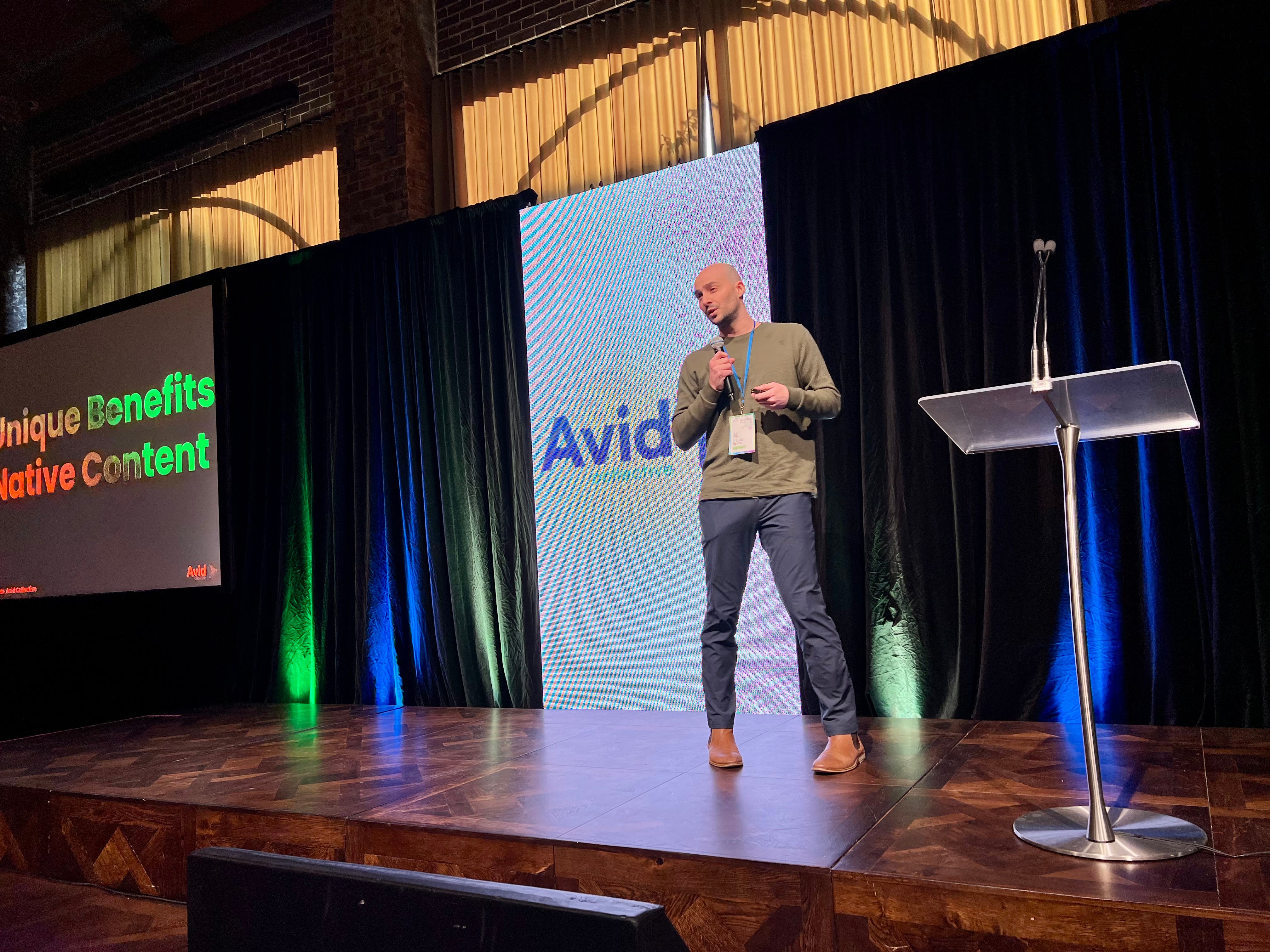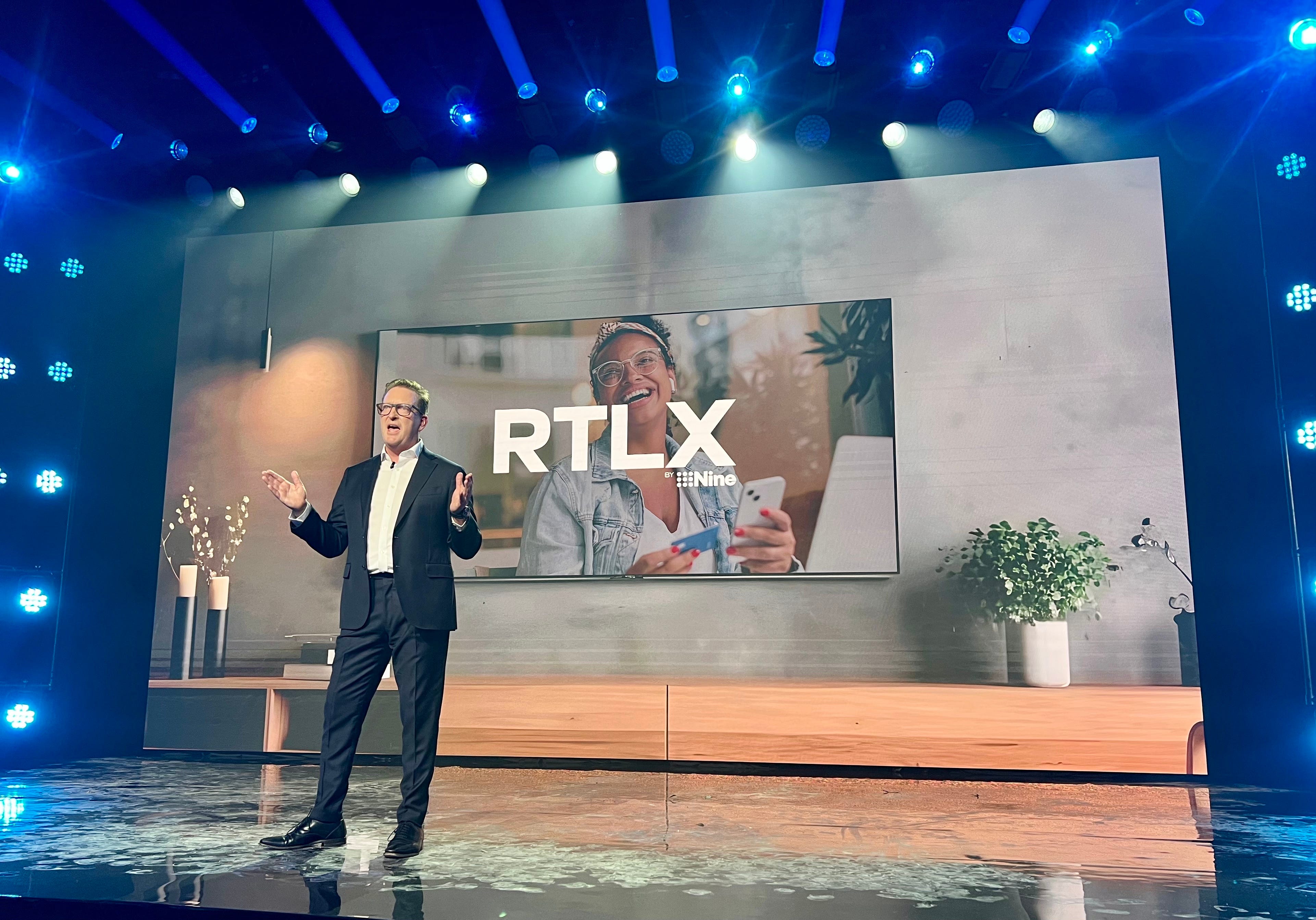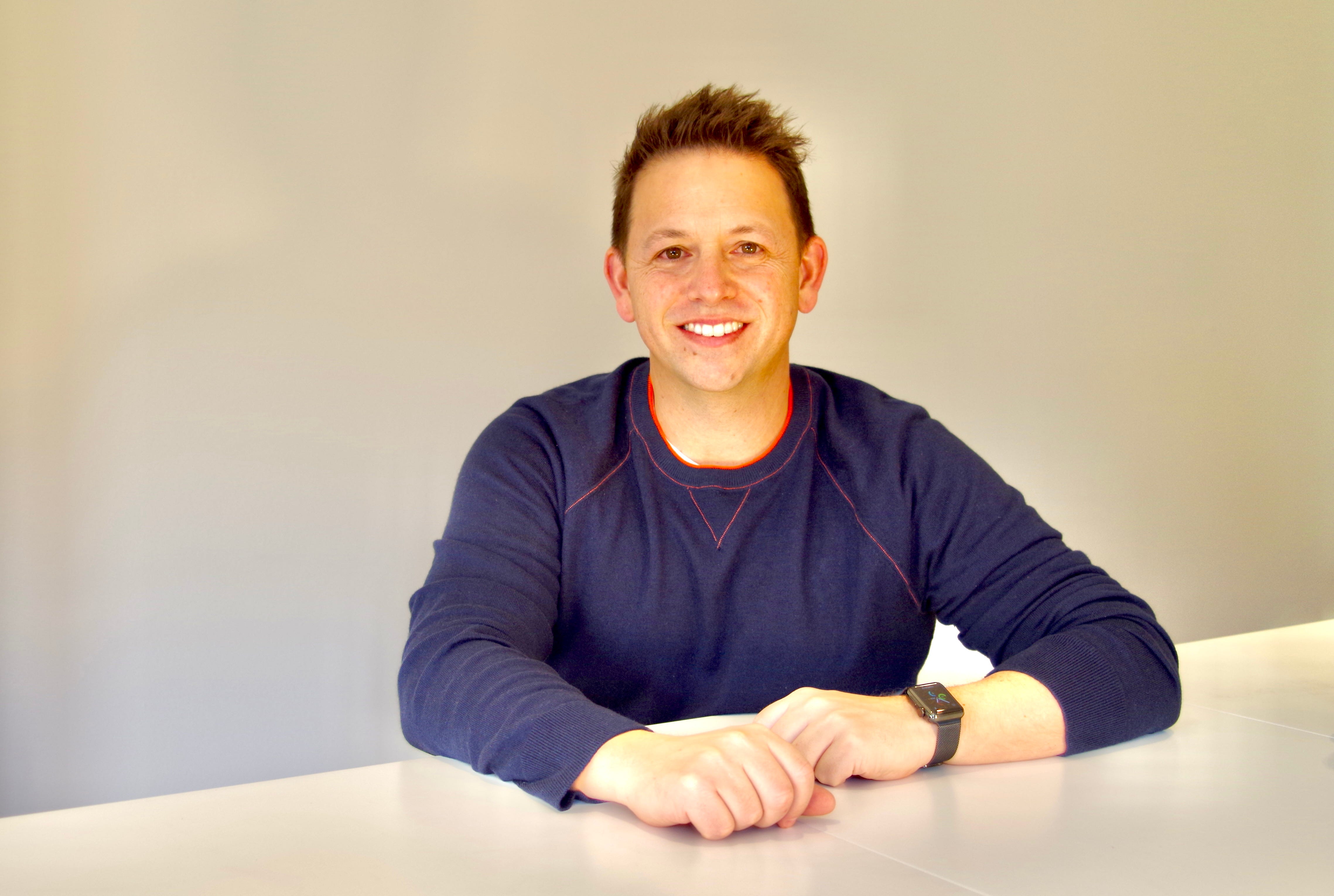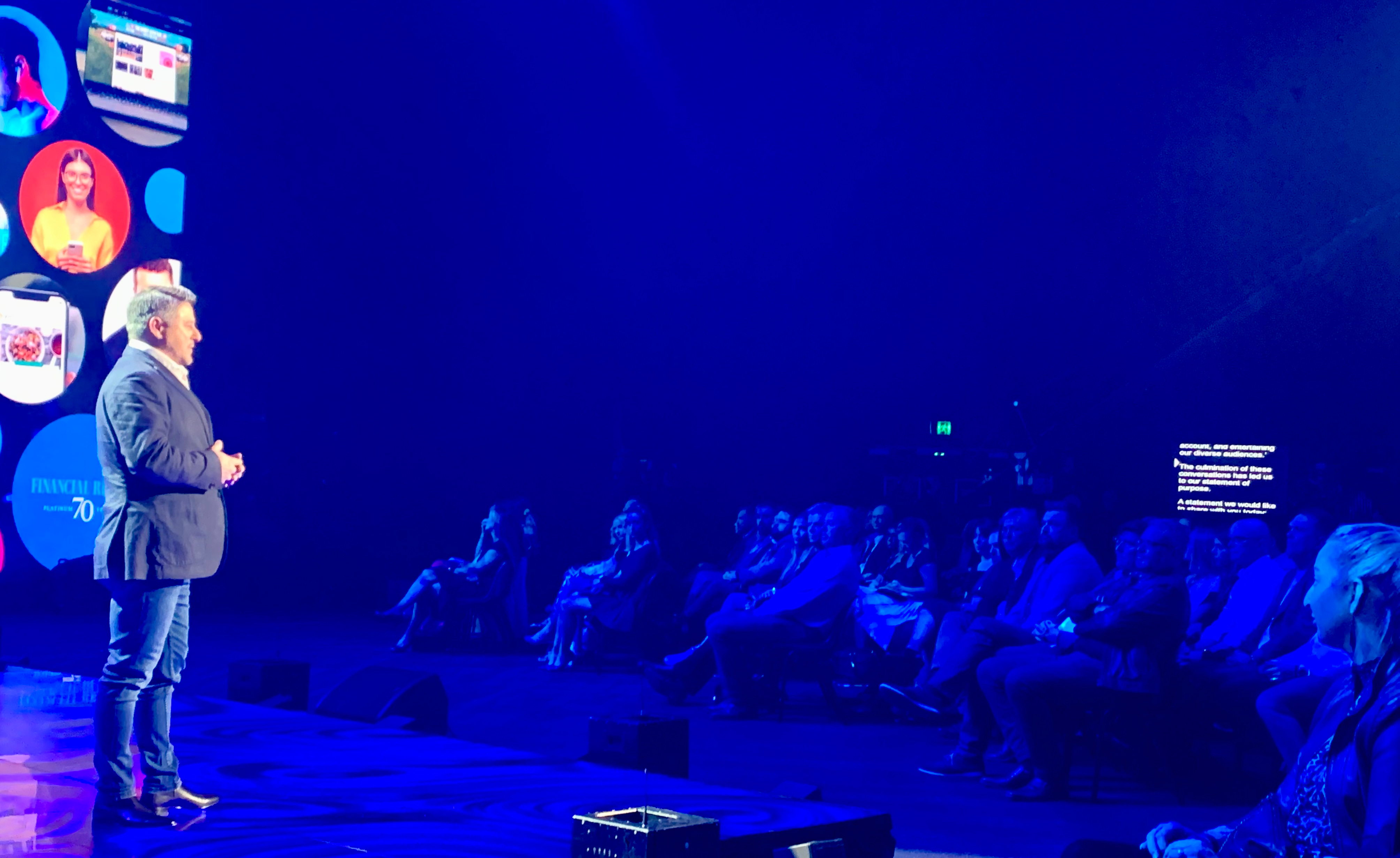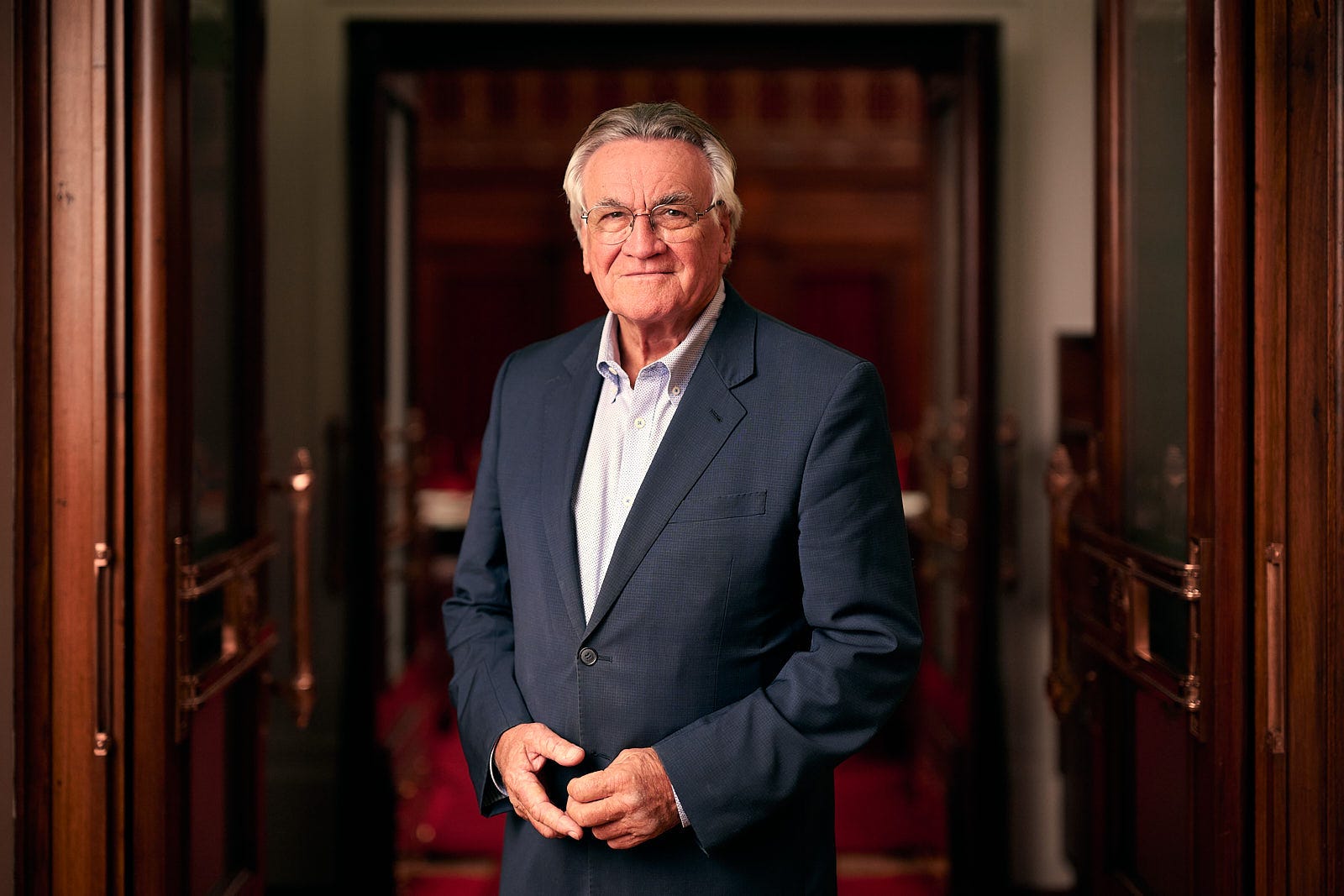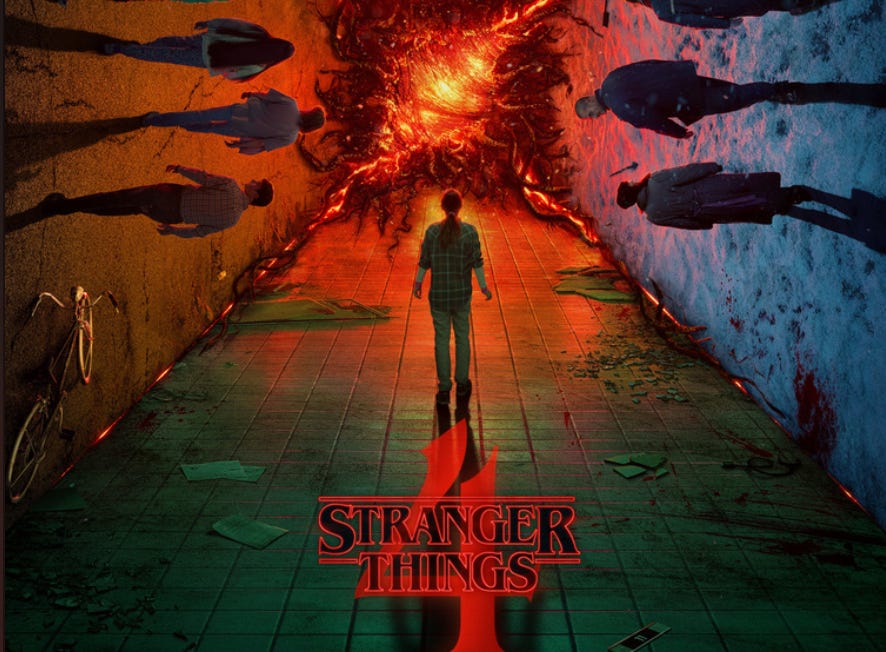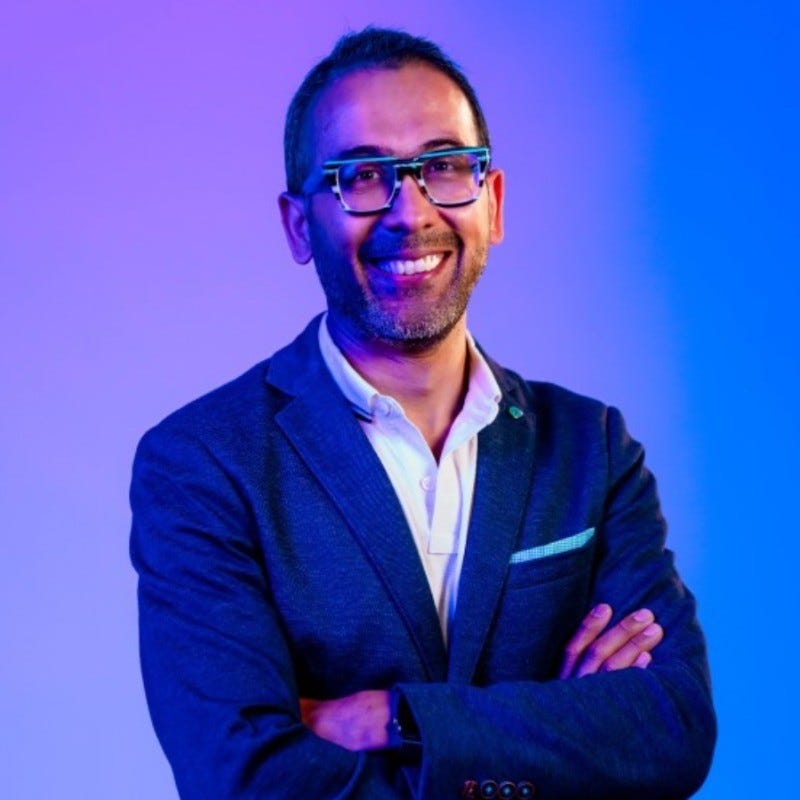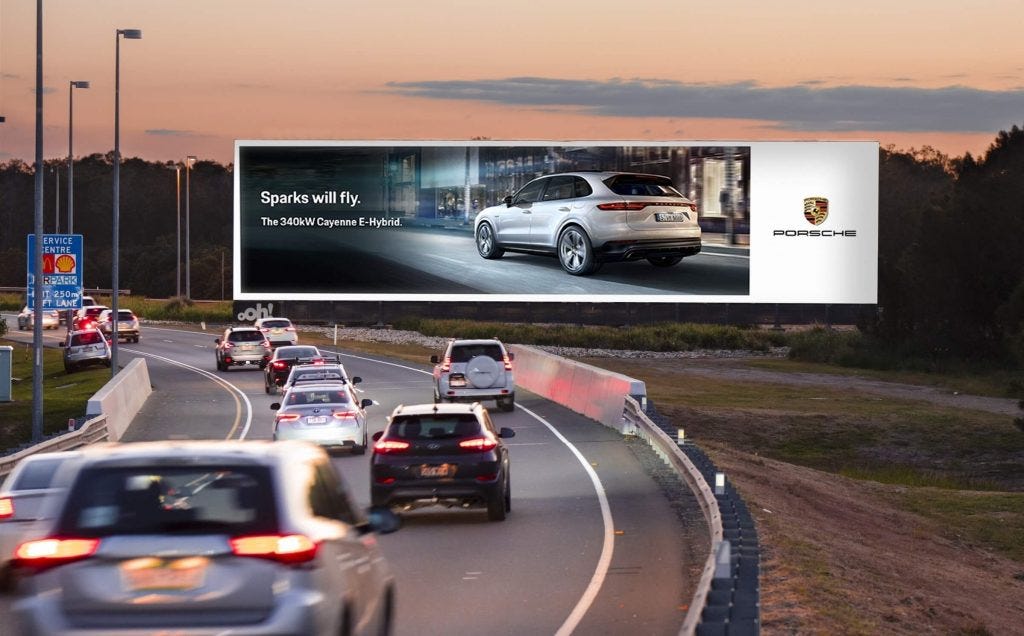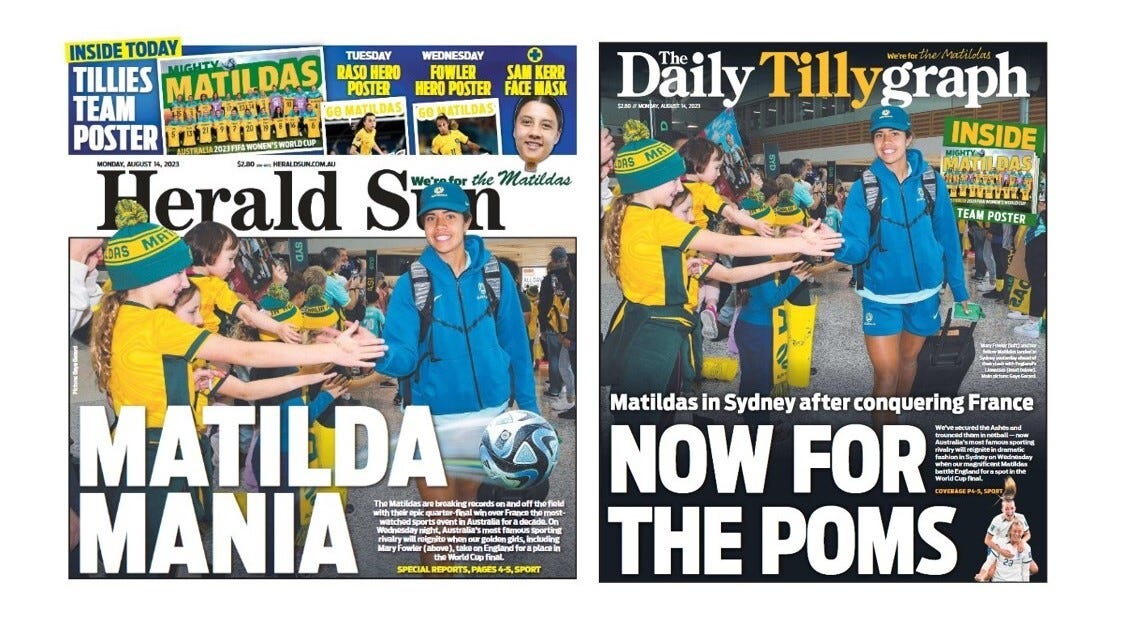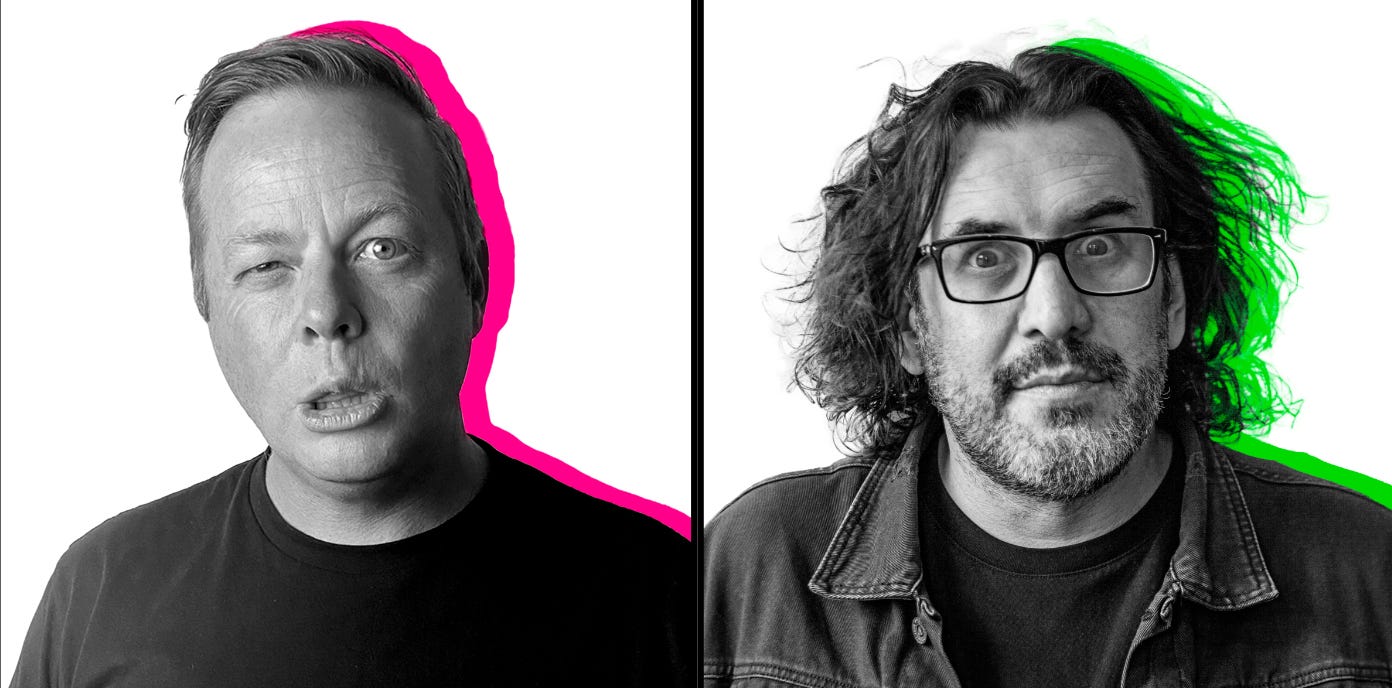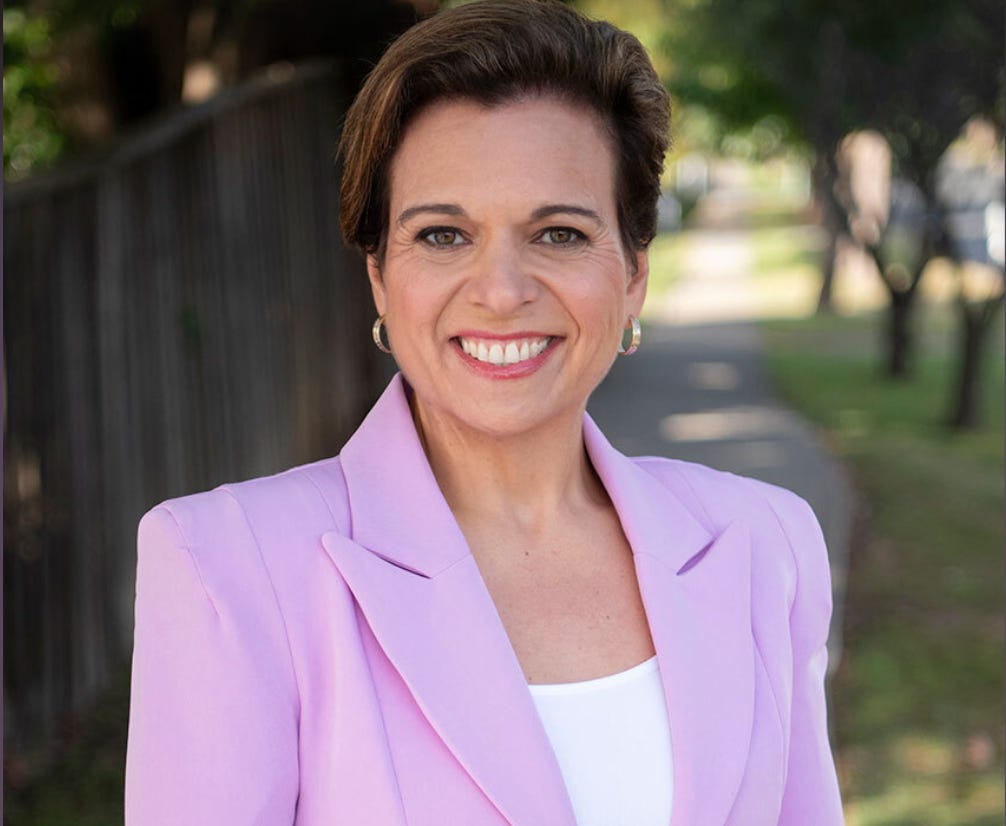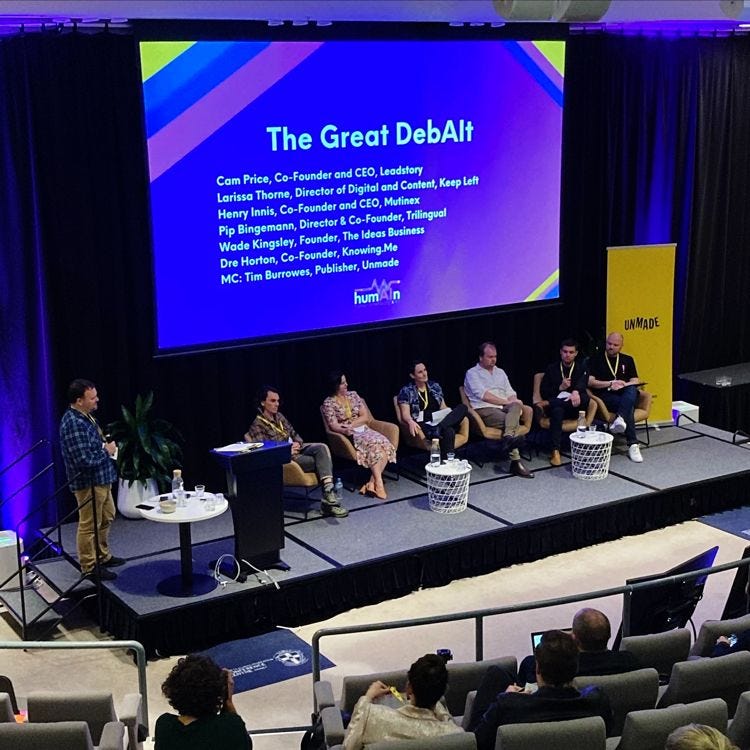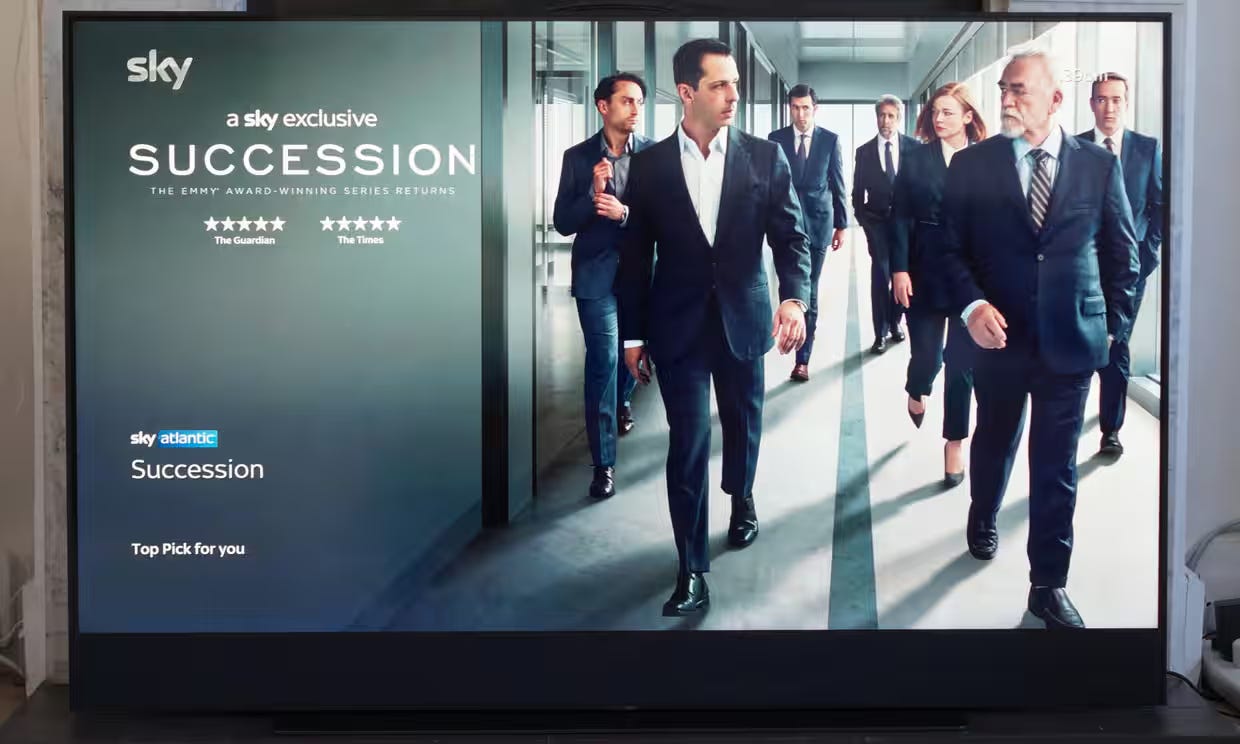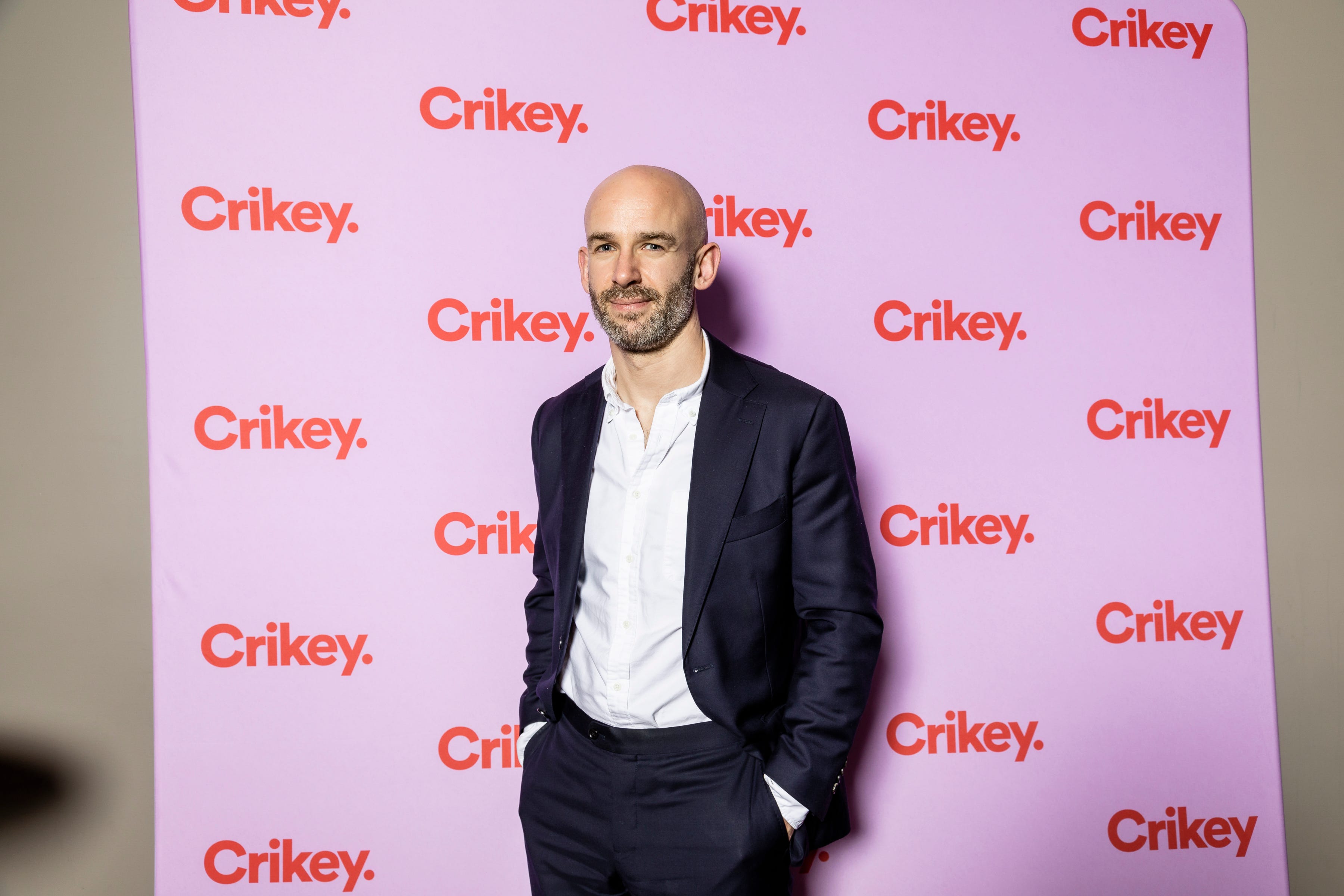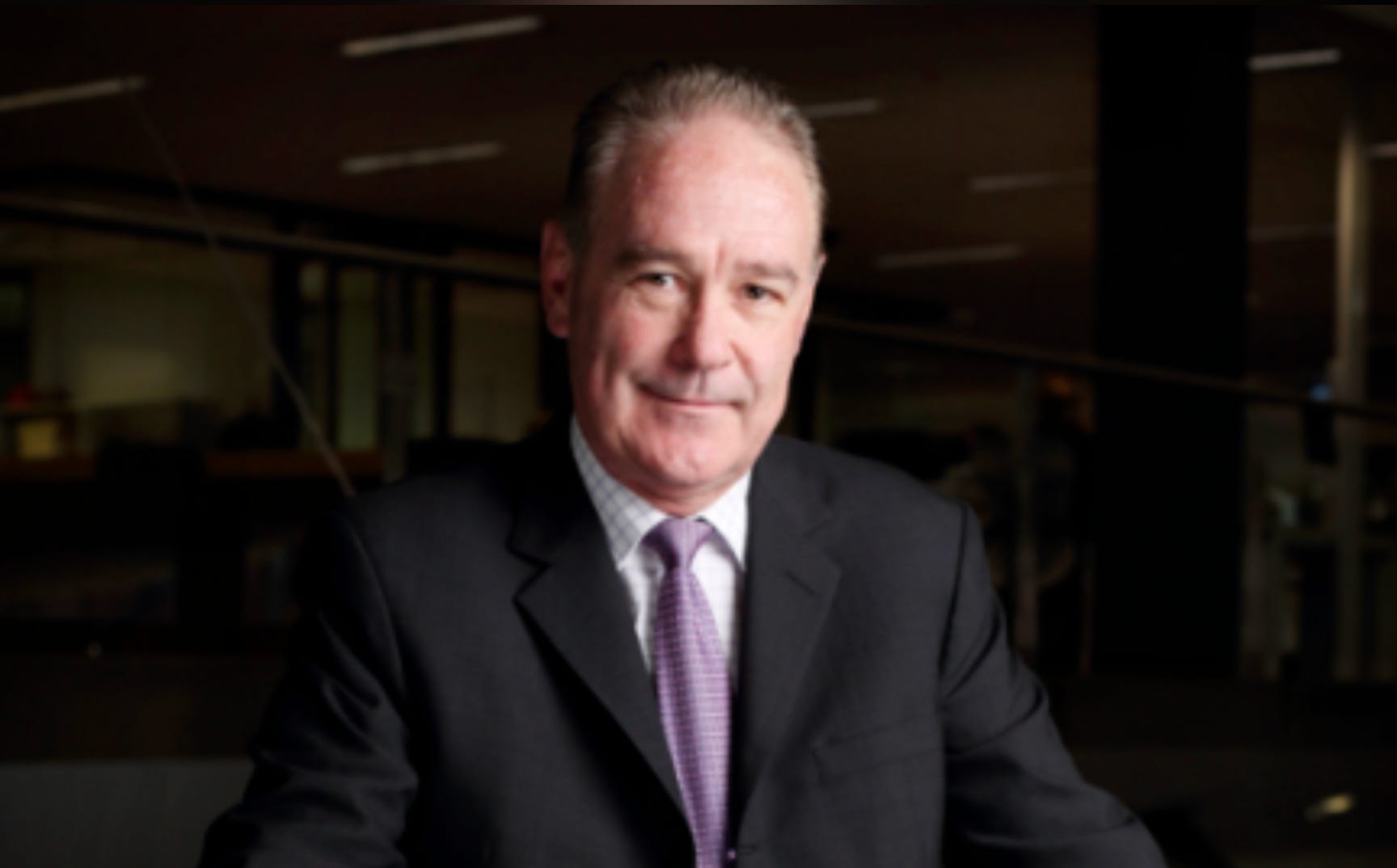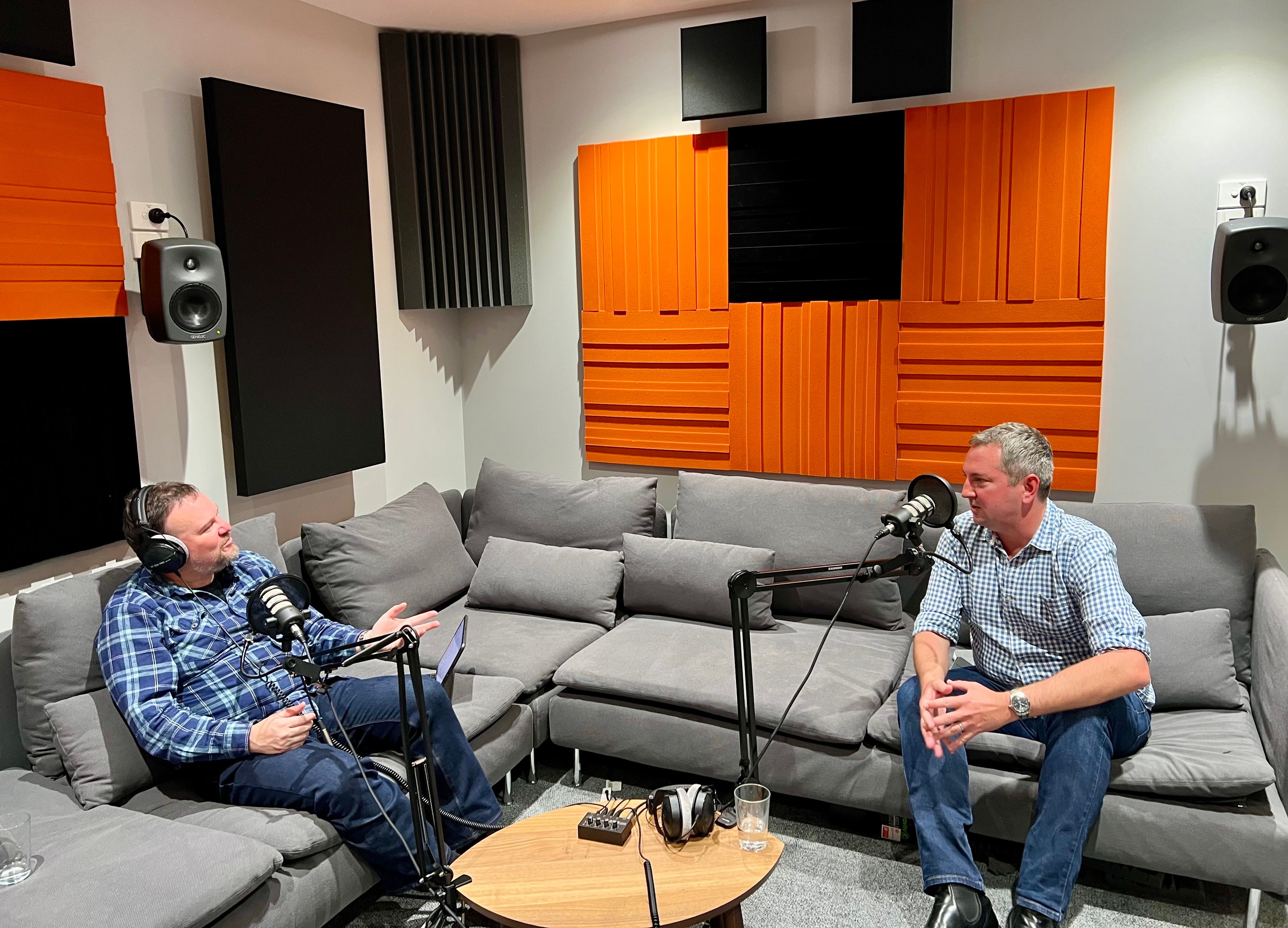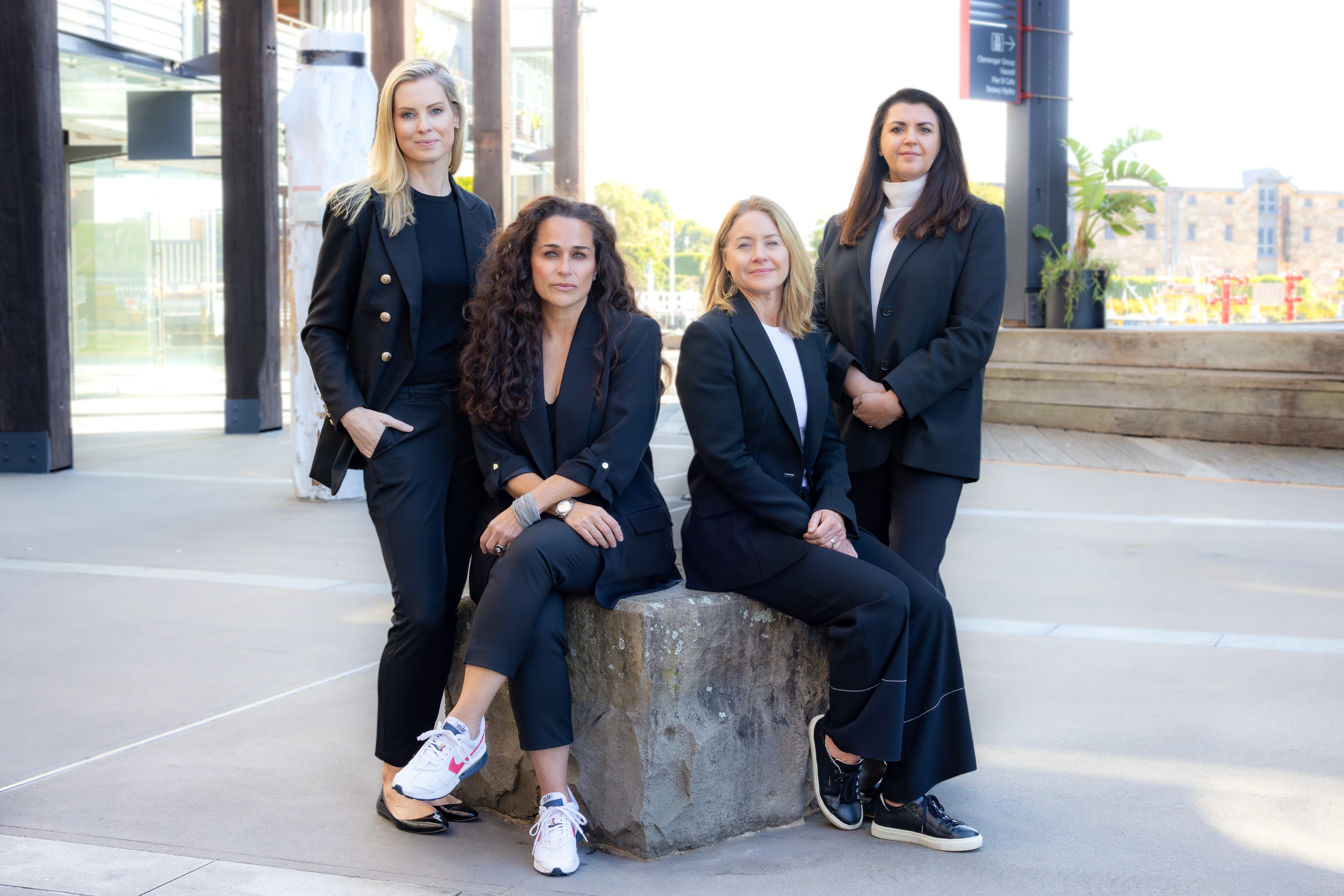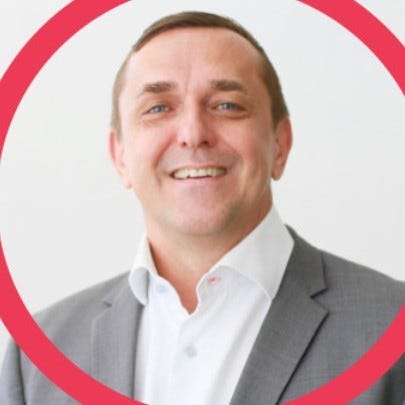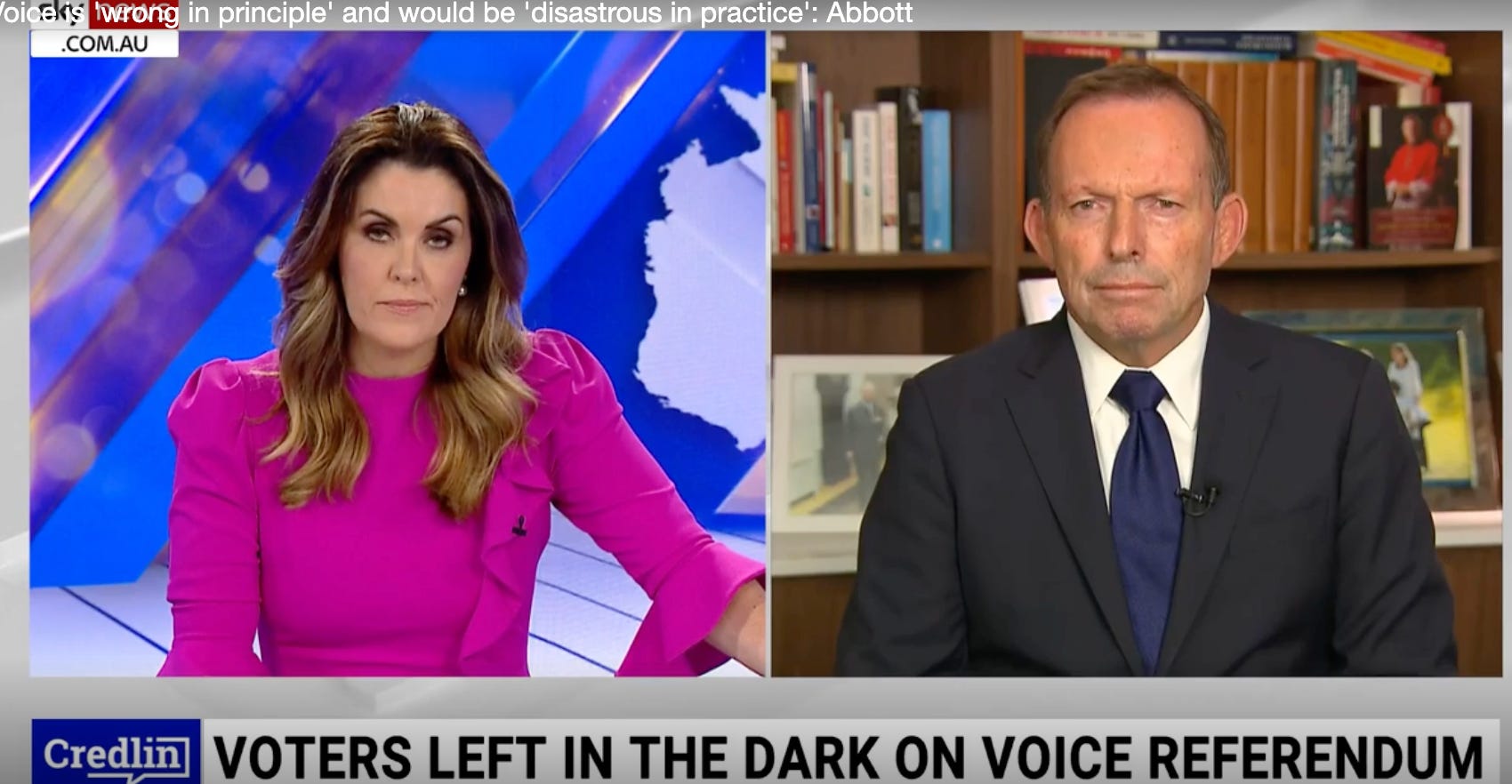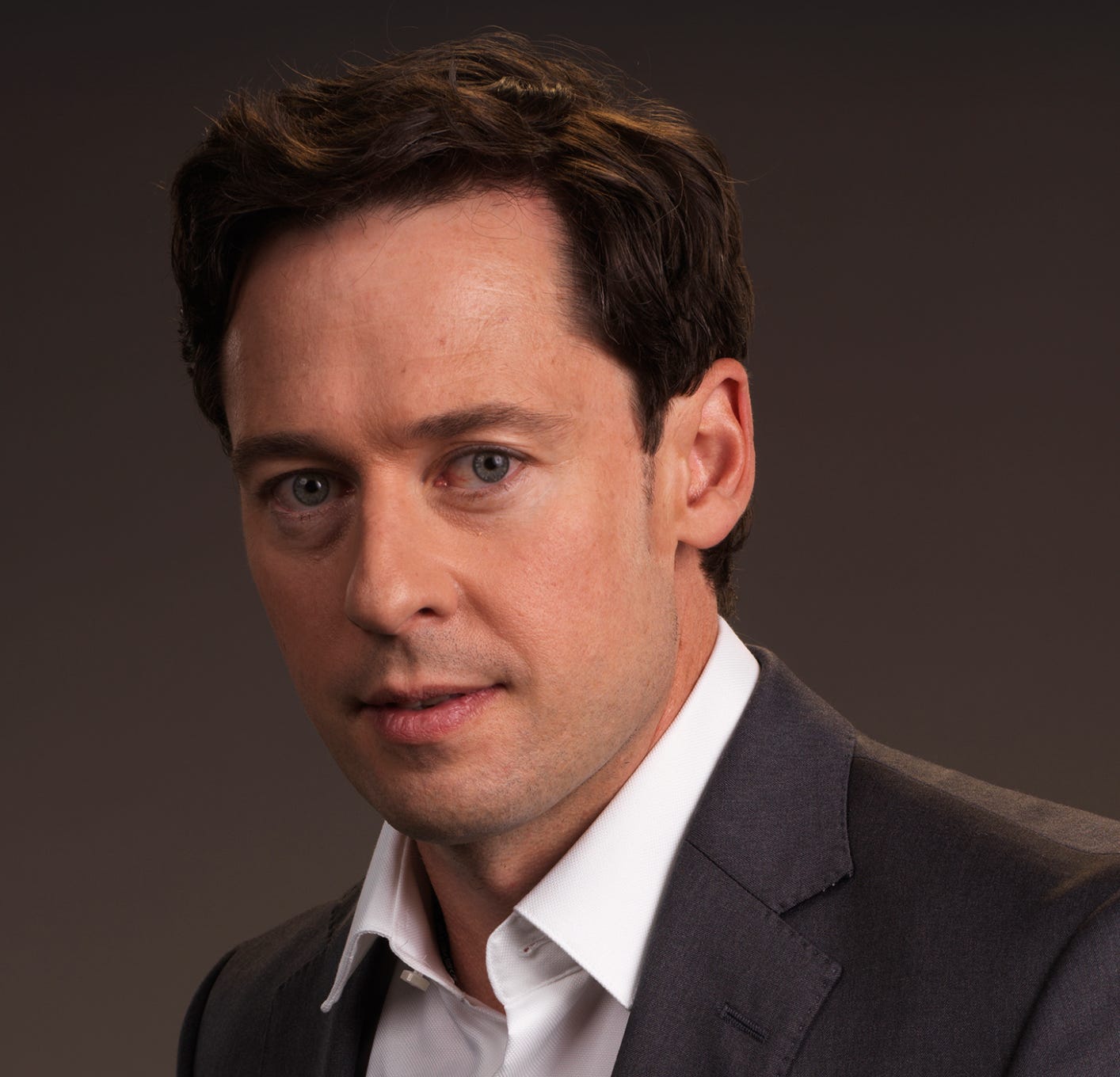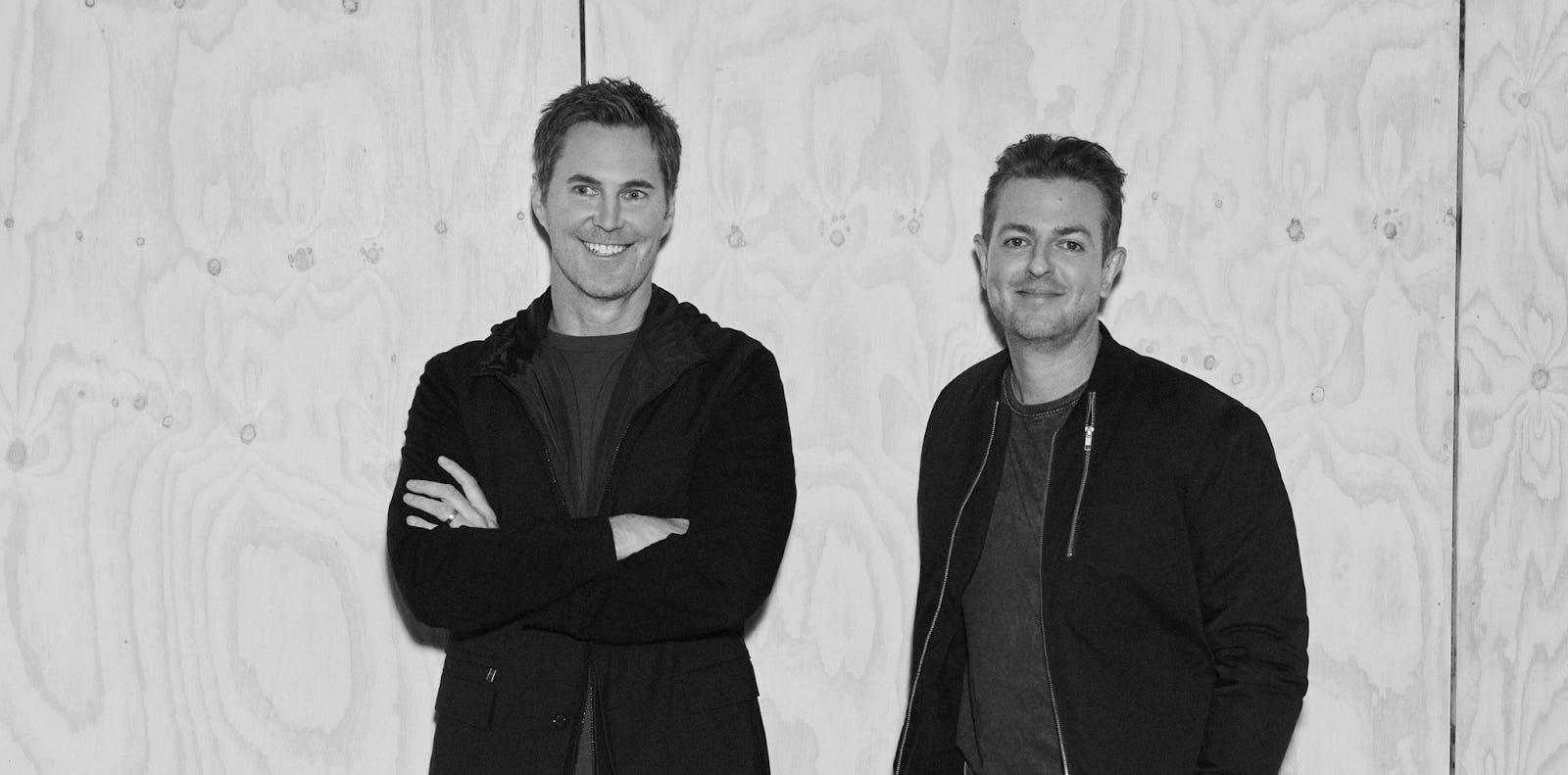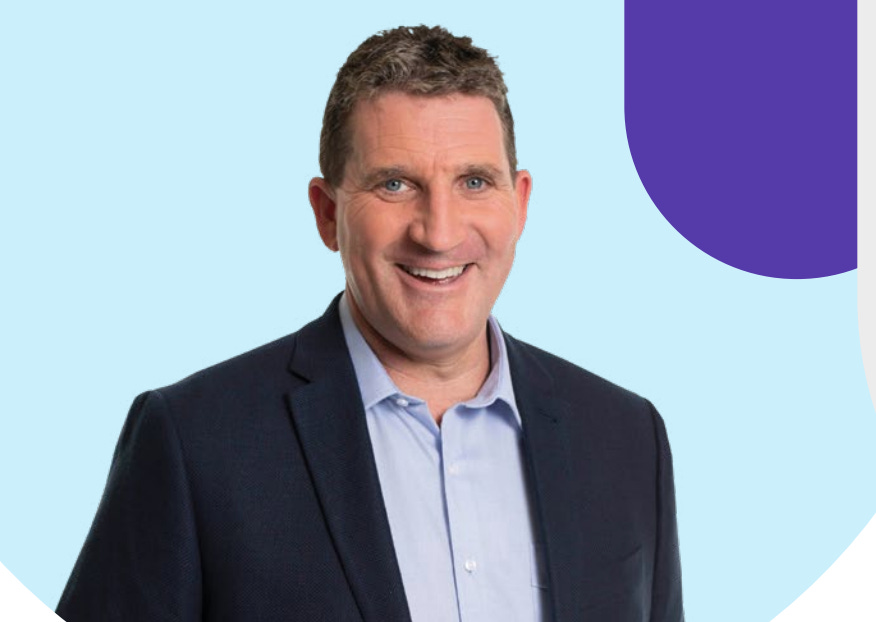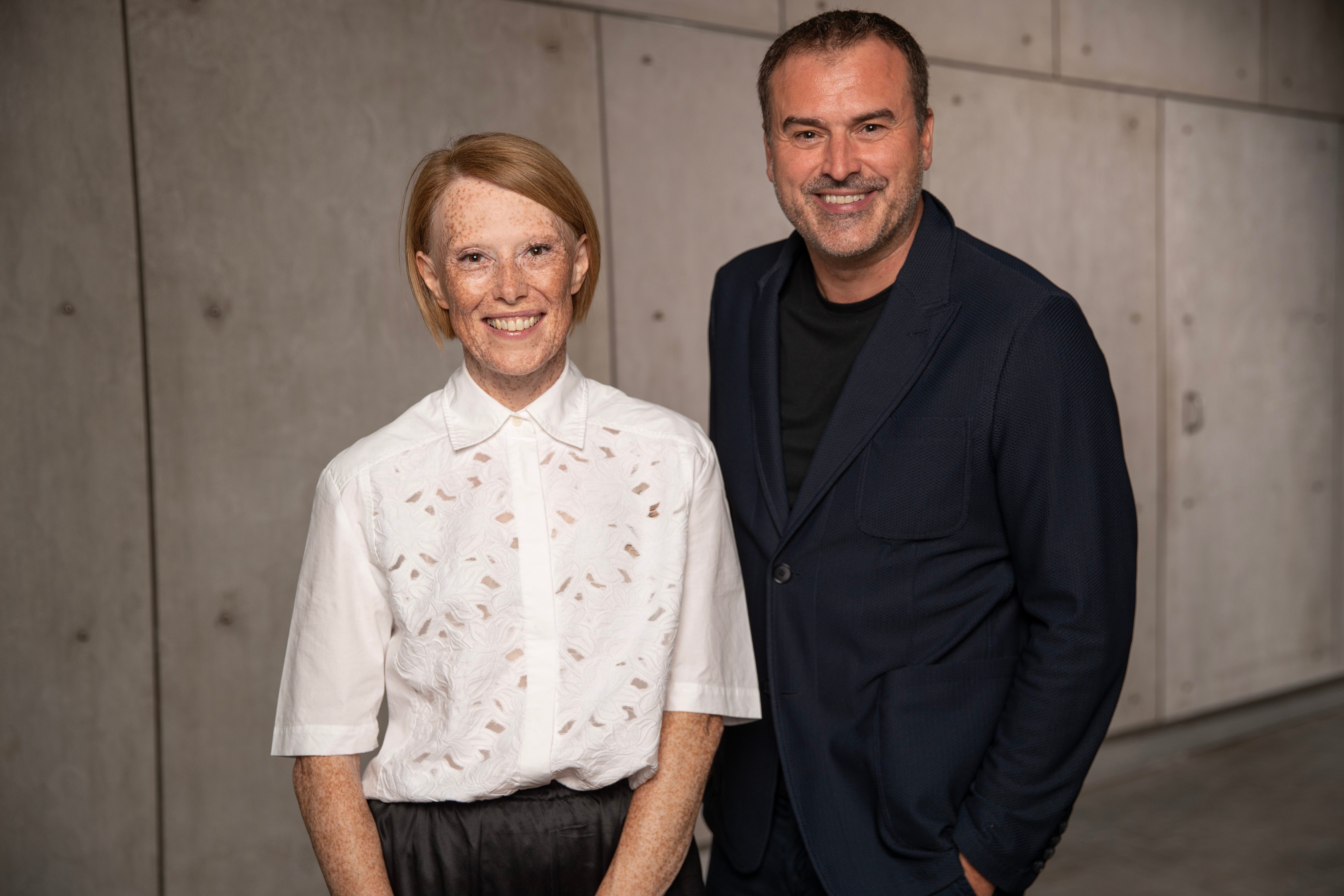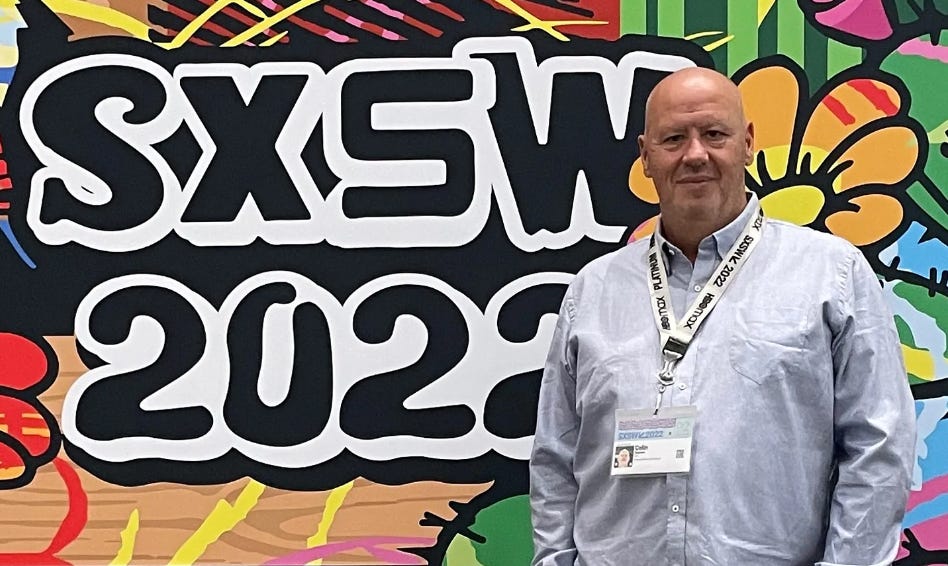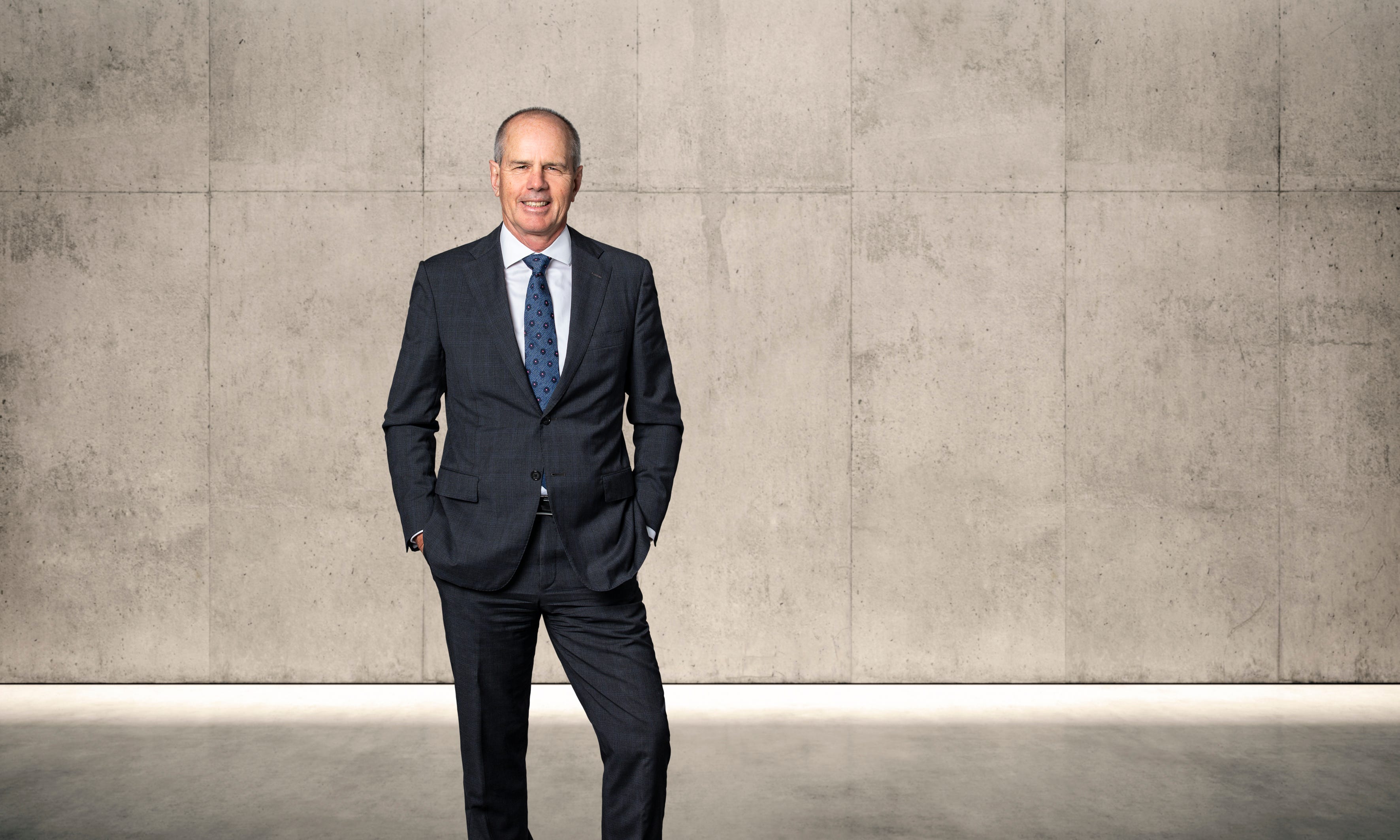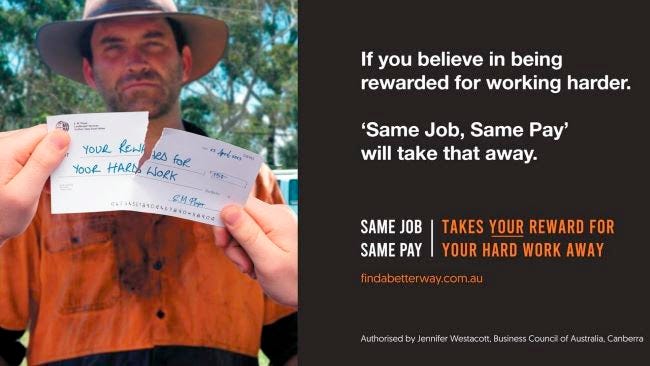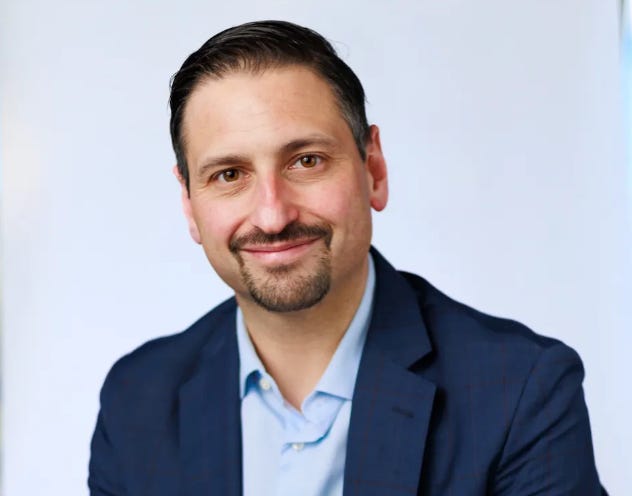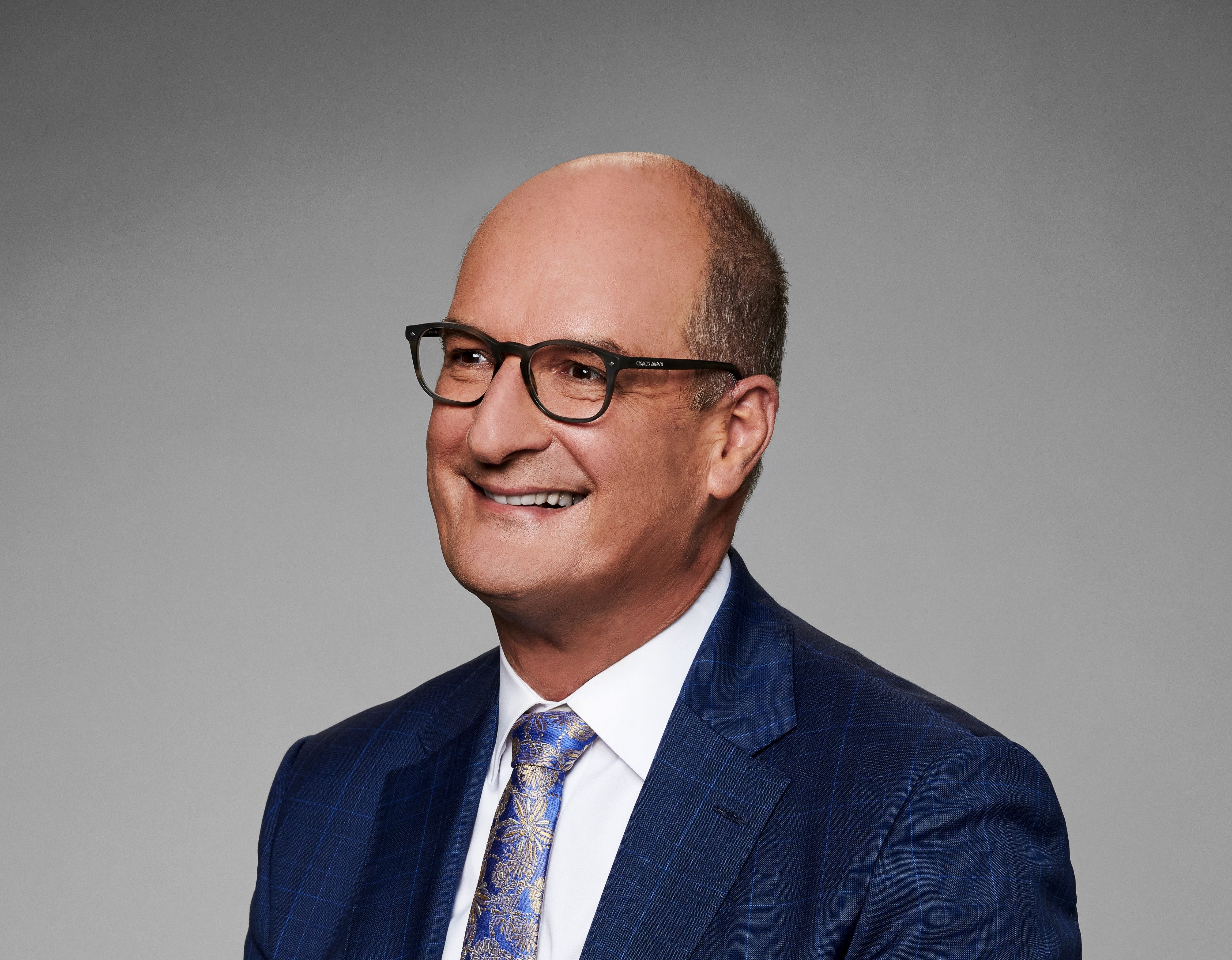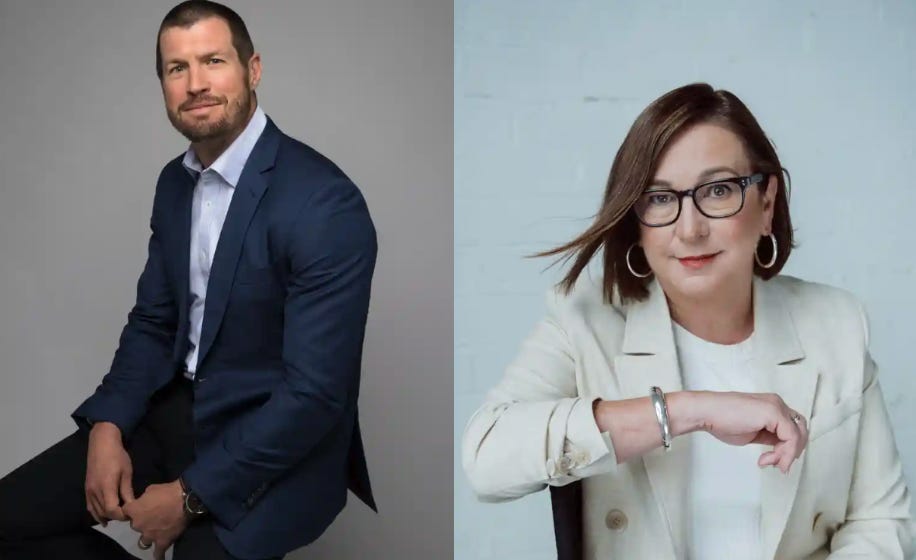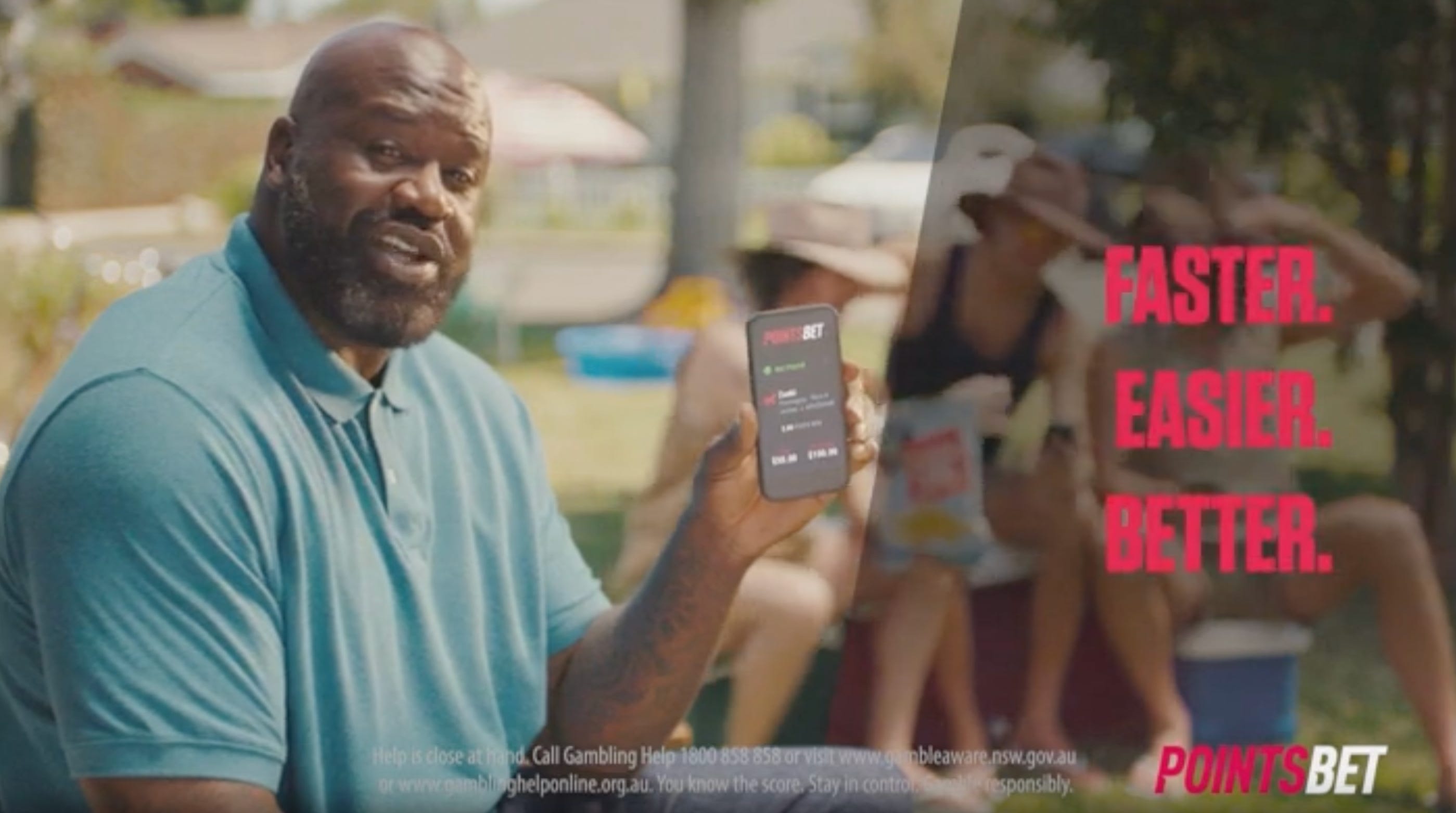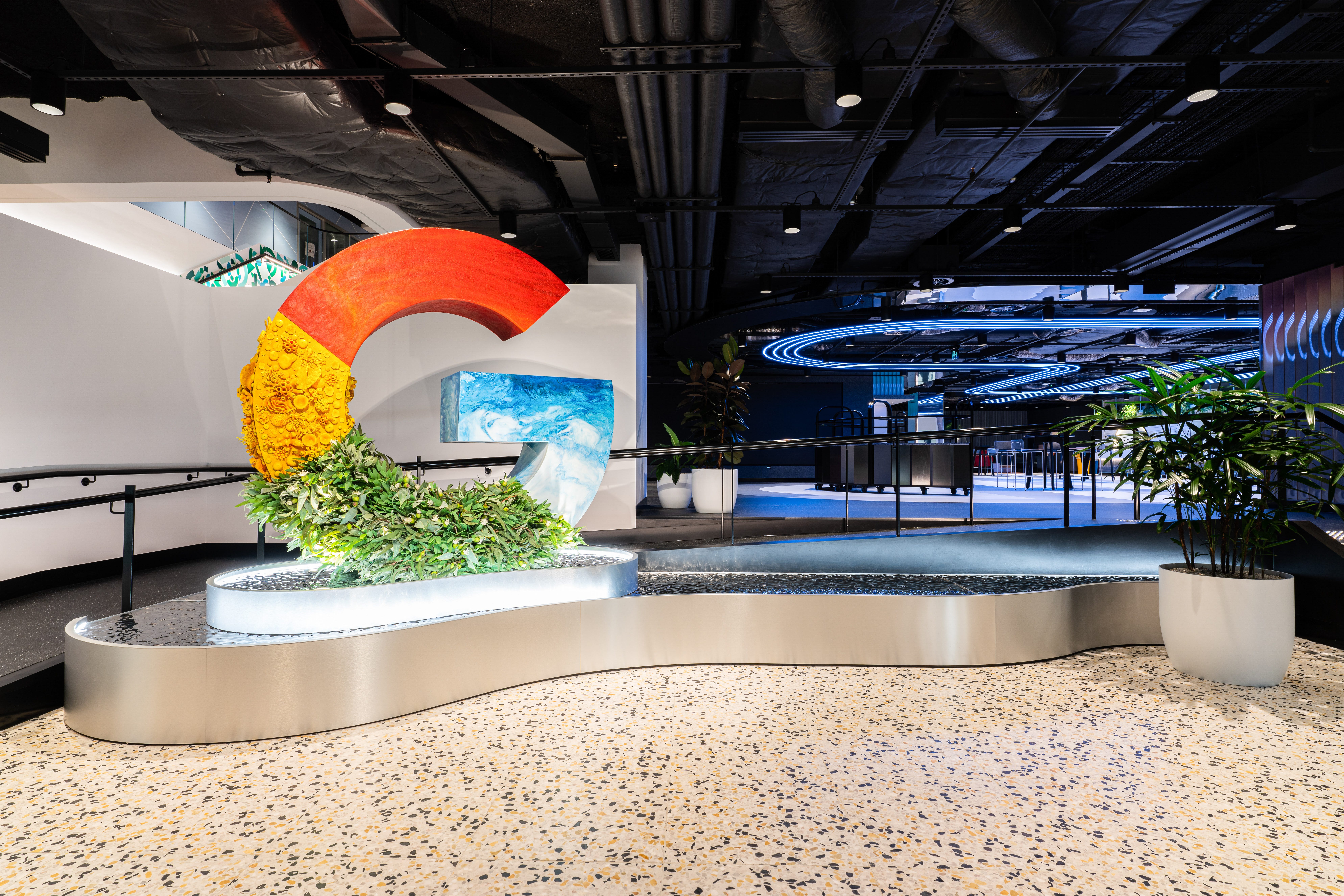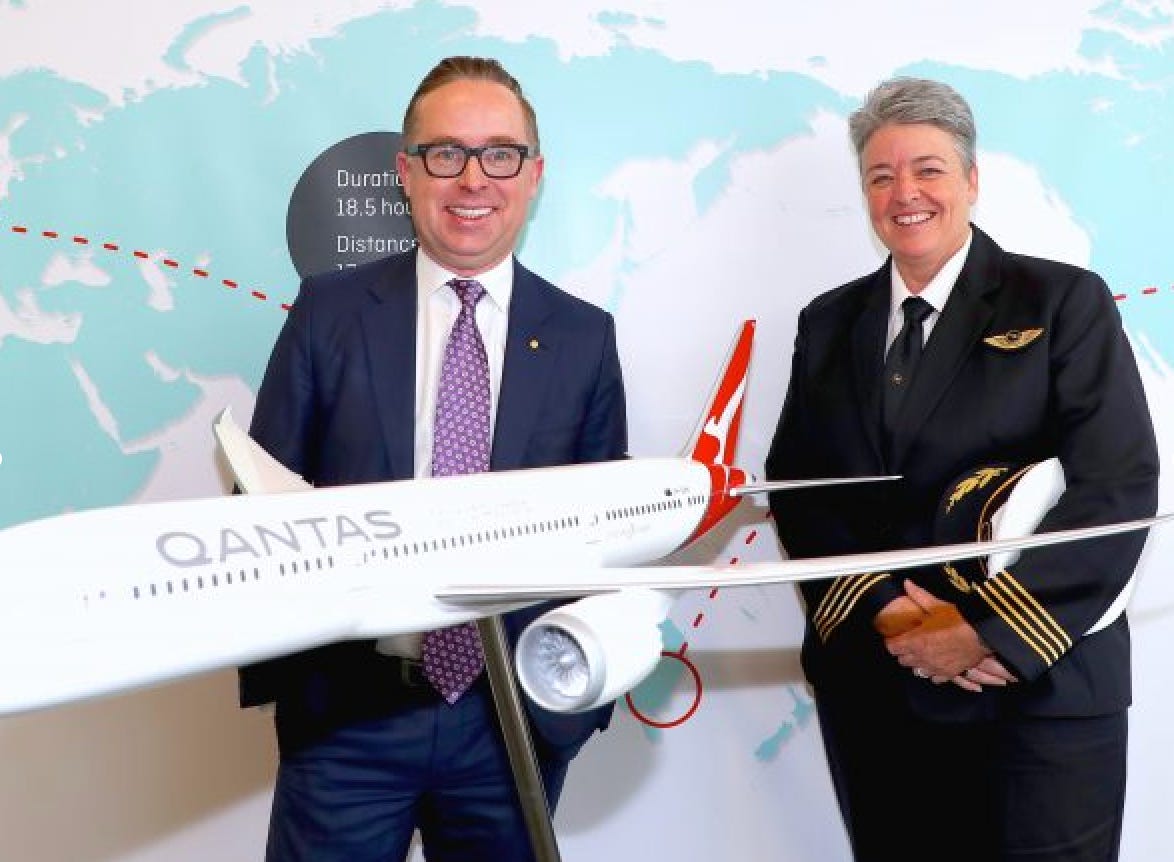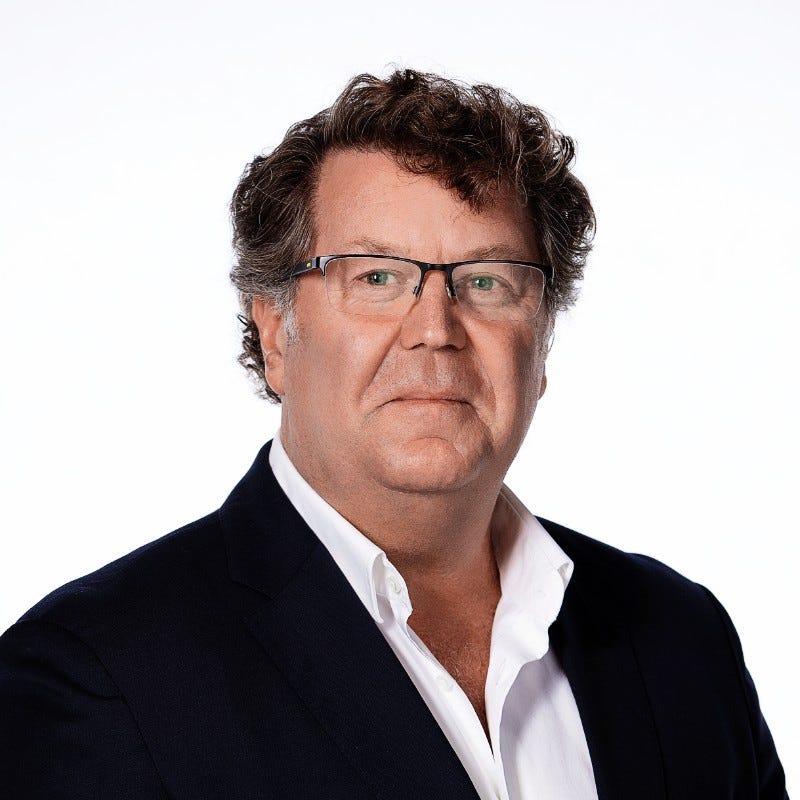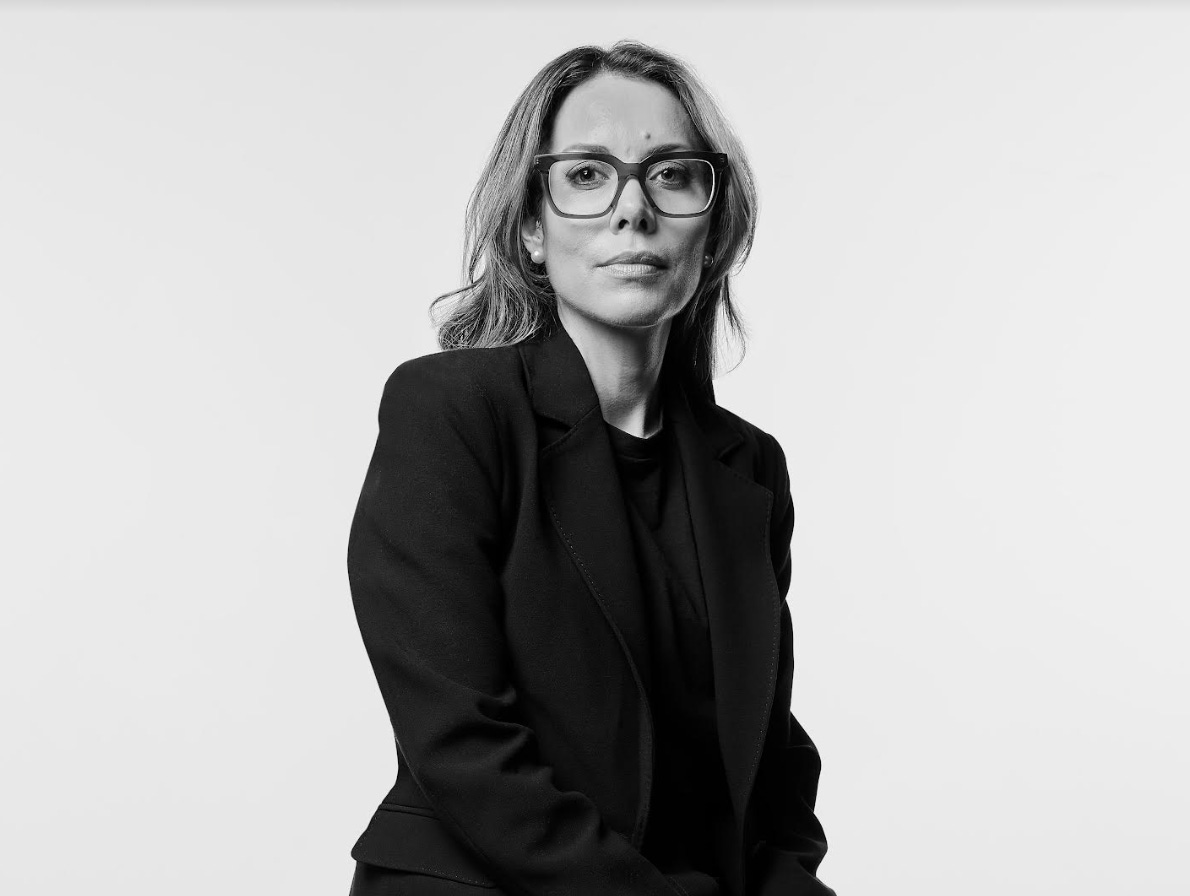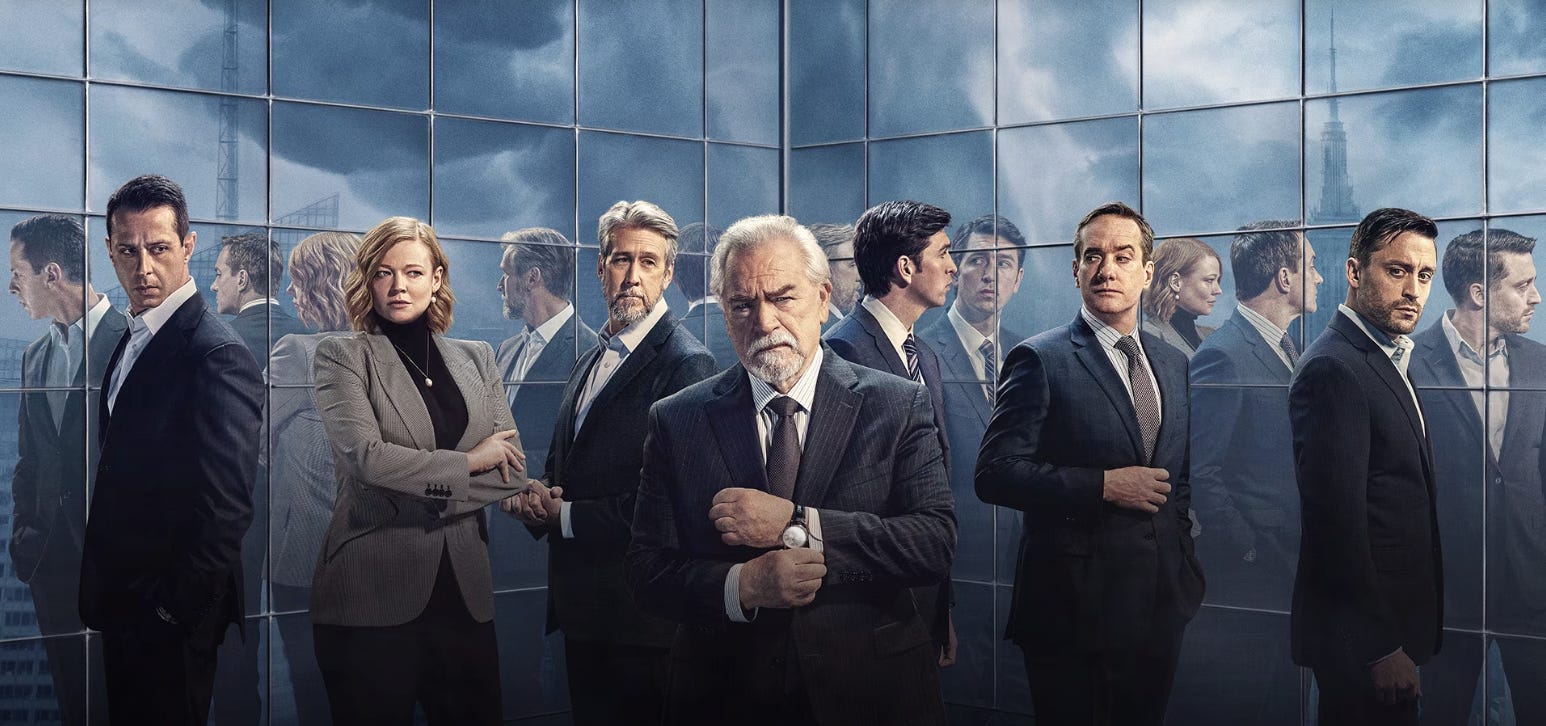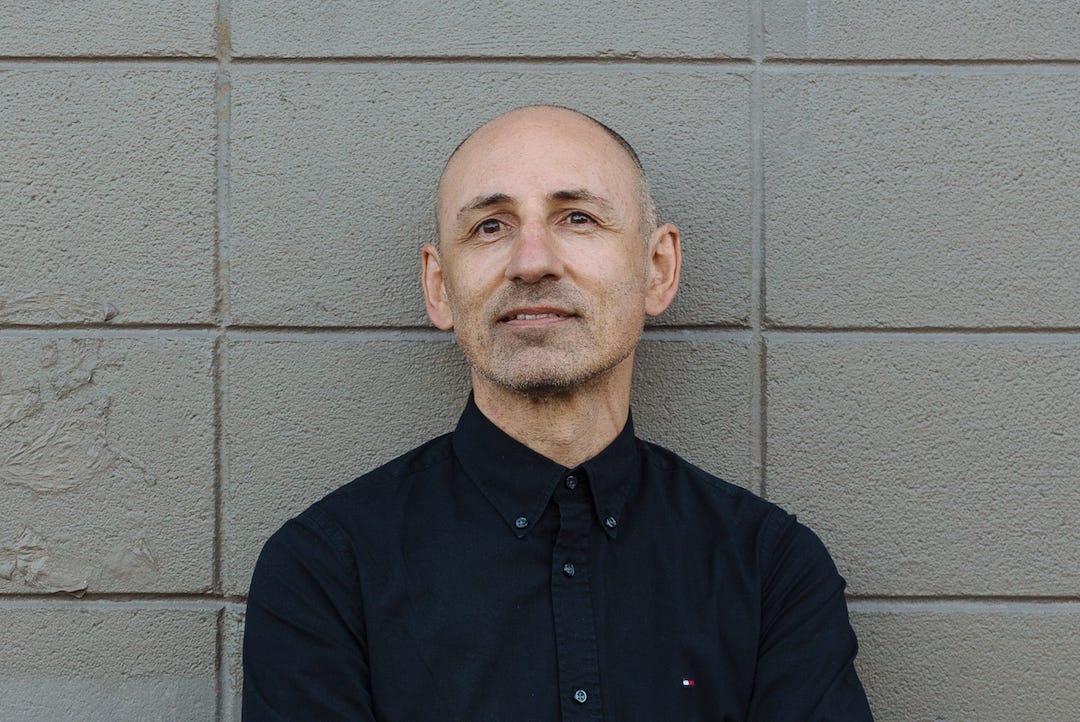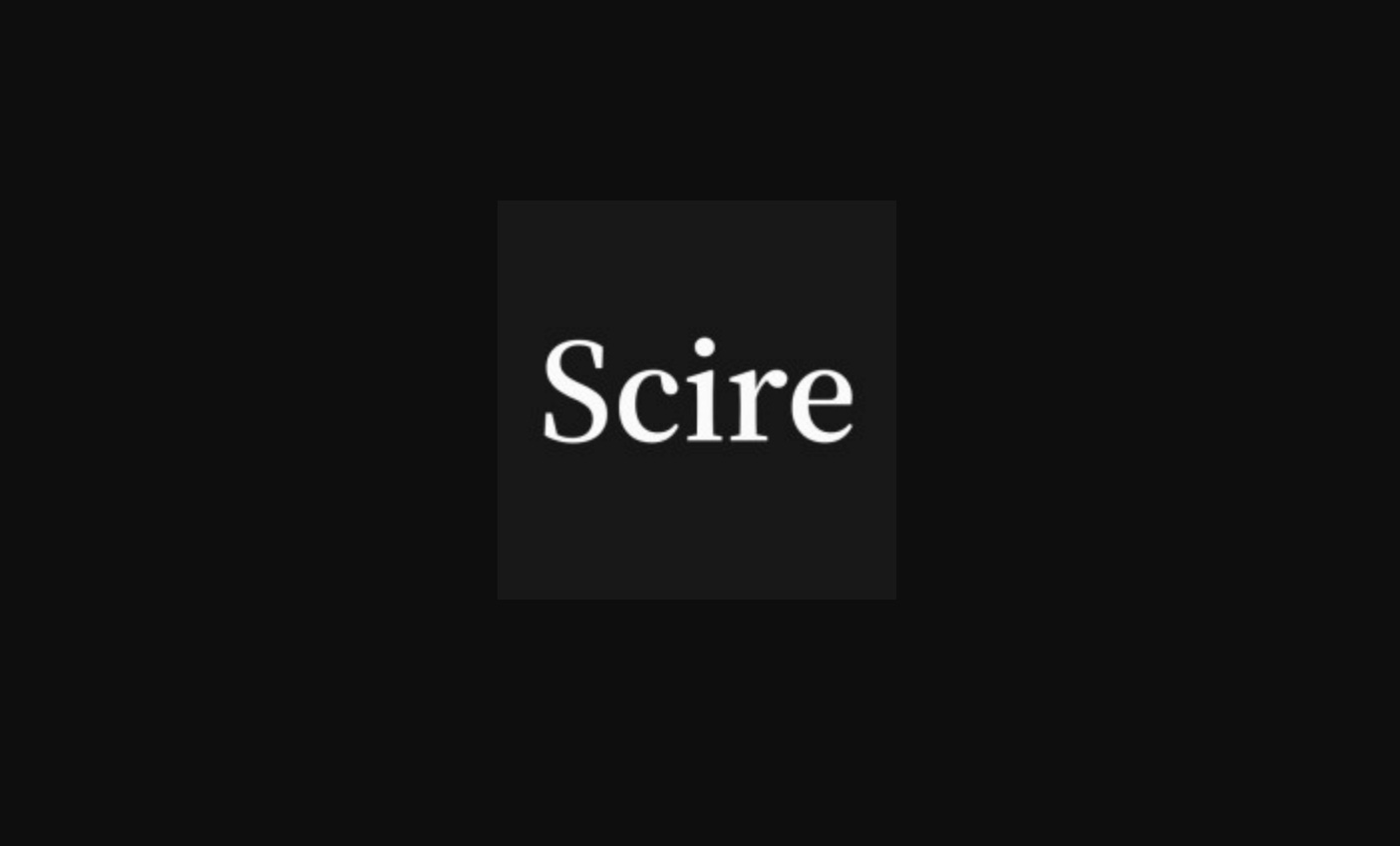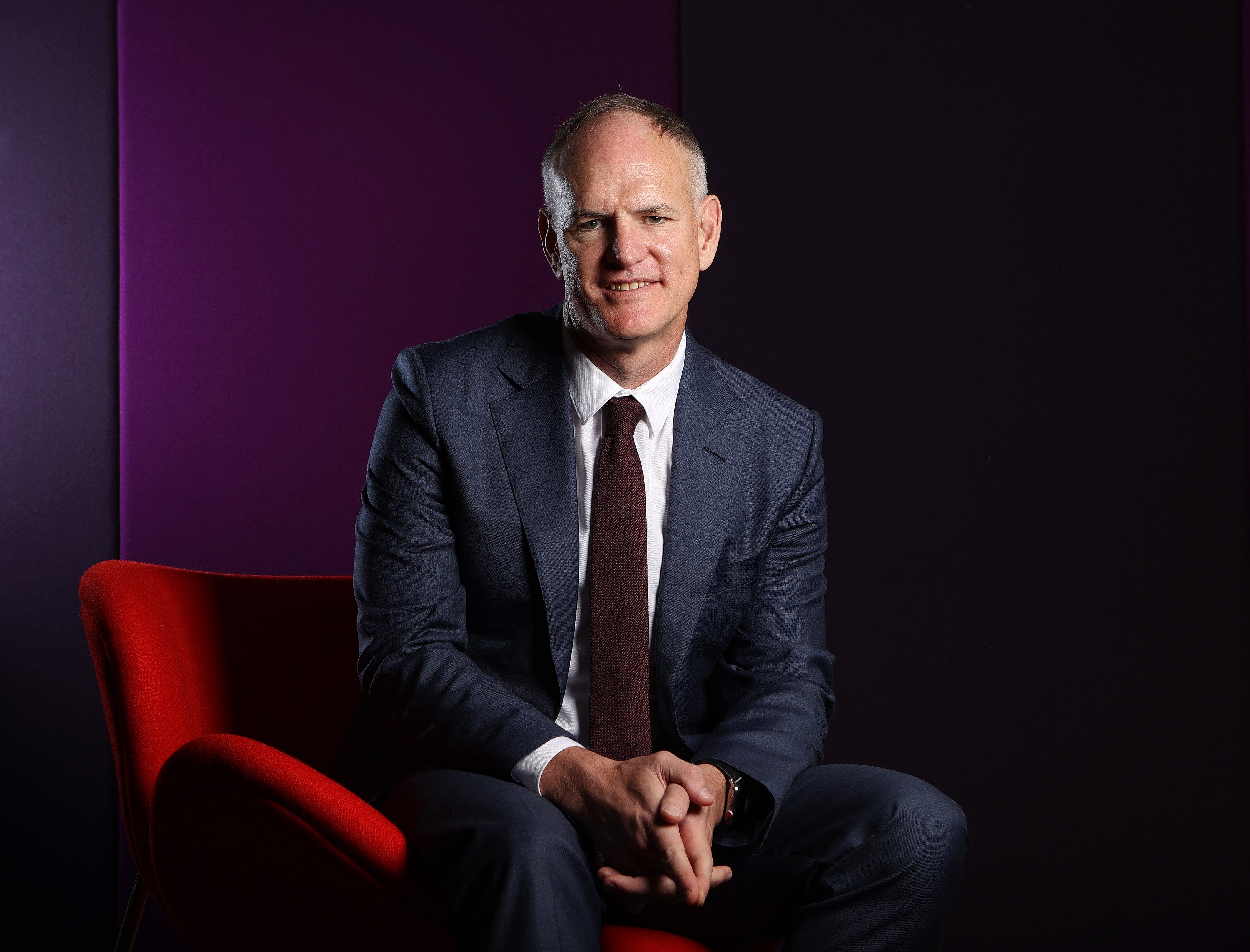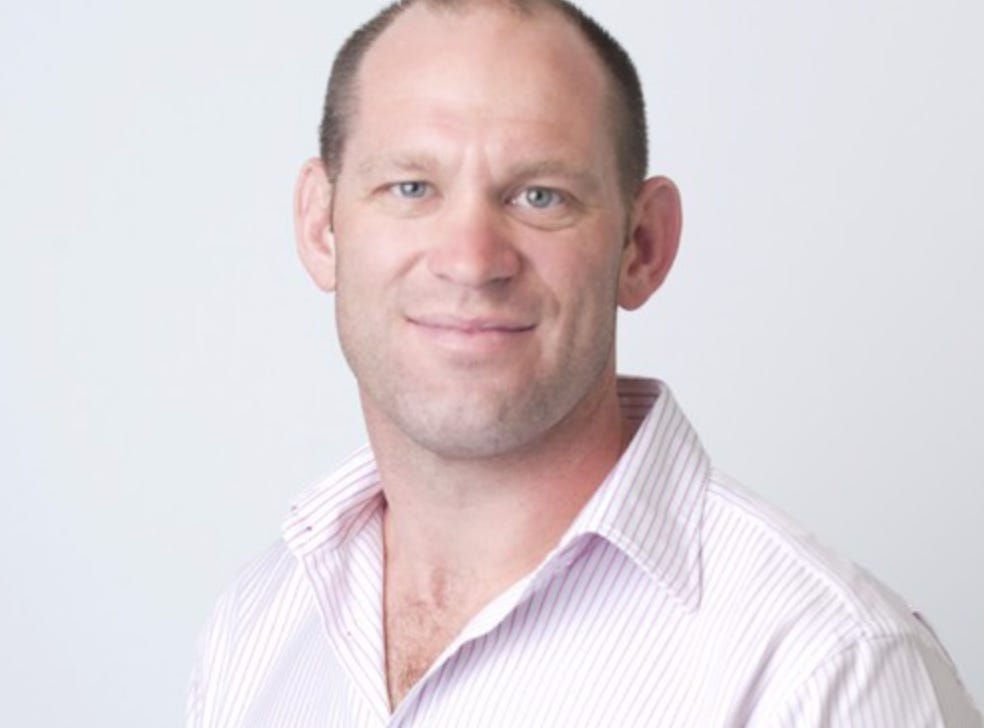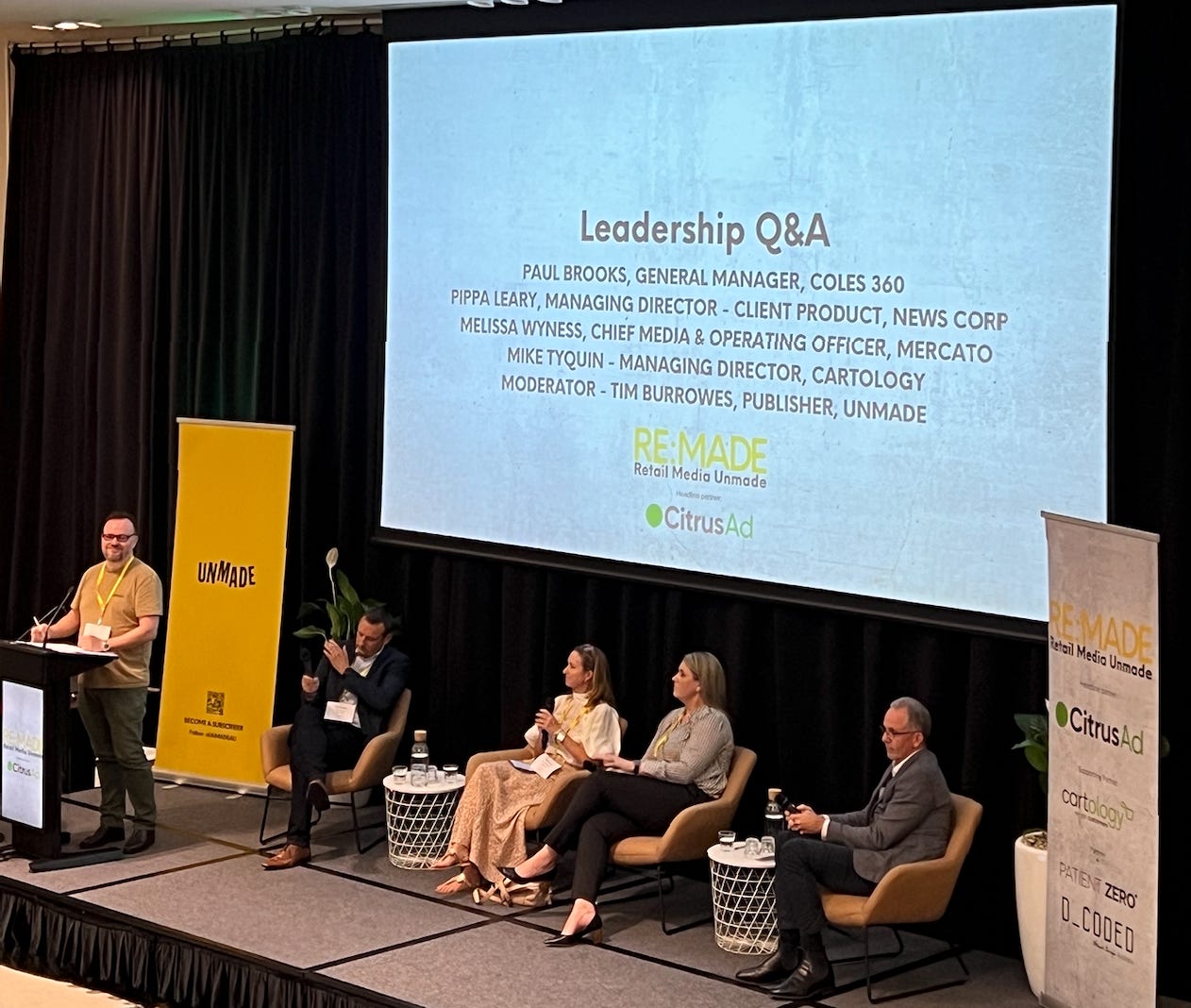News Corp's Michael Miller on reaching 1m subscriptions, negotiations with Facebook, the economic challenge of AI, and navigating advertiser boycotts
Welcome to an audio-led edition of Unmade.Today’s edition features one of the big beasts of Australian media - a rare, full length interview with News Corp Australasia’s executive chairman Michael Miller.It’s not quite fair to describe Michael Miller as a News Corp lifer. He joined the organisation as a junior marketer in April 1992, but briefly left during the tumultuous reign of Kim Williams. During that short period, he ran APN News & Media (these days known as HT&E) as its shifted its centre of gravity from newspapers to radio. Miller was the man signing the cheques when the company’s Australian Radio Network boldly poached Kyle Sandilands and Jackie Henderson from Southern Cross Austereo, and remade the radio landscape.Miller came back to News Corp as executive chairman at the end of 2015. By that point, the worst of the newspaper industry’s existential crisis was over, but the business model was far from certain.Since then the company - which publishes The Australian, the Herald Sun, The Courier Mail and The Telegraph news mastheads among many others - has proved the sceptics wrong by succeeding with paid subscriptions. Even as the company cuts 5% of its global workforce to navigate an uncertain economy, news publishing seems in a safer place. In today’s conversation, Miller points out that last time Unmade’s Tim Burrowes interviewed him on stage, back in 2018, the company had 420,000 subscribers. It’s since passed 1m.The business model for news publishing was also boosted by the politically-driven News Media Bargaining Code, which forced Google and Facebook to strike deals with local publishers. Miller offers a warning for the consequences for the industry (and Facebook) if, as seems likely, Facebook’s parent company Meta walks away from renewing its deals next year.And Miller points to the next battleground for payment - AI. In the same way that Google and Facebook were asked to pay to deliver content originated from news publishing, Miller says the same argument about ChatGPT is “inevitable” and imminent.The interview also tackles the polarising nature of News Corp’s content, how it addresses advertisers boycotts led by the likes of Sleeping Giants and Mad F*****g Witches (“Don’t give in to bullies”), and the evolution of its columnists.Miller also puts forward an argument for optimism in the most challenged journalism space: local news.Transcript of Michael Miller interview with Tim Burrowes:Tim Burrowes:My guest has arguably the biggest job in Australian media. Michael Miller is Executive Chairman of News Corp Australia, a role he's held since 2015. He's been with News Corp for most of his career, since joining the company's marketing team 30 years ago, next month. You'll know News Cook from its portfolio of metro news mastheads, including the Telegraph, the Courier Mail, and the Herald Sun for its national title, The Australian, for news website news.com.au, and for its TV news operation, Sky News Australia. The company also has majority stakes in Foxtel Group and in property platform REA Group. Michael Miller has had a front row as News Corp evolved from a newspaper company into something much more complicated.On Monday News Corp held its D_Coded event for digital marketers, which is one reason for the timing of this conversation. Now, Michael, the last time I interviewed you on the record was on stage at Mumbrella360, five years ago believe it or not. Now the title of the keynote you gave that day was Persuading Audiences and Customers to Pay and Stay. Even then, I'm not sure that the whole publishing world was convinced that subscribers could be the main means of funding newspapers. When Rupert Murdoch started the company on that path more than a decade ago now, many, many people predicted that it would not work. Yet here you are. Is it still about getting people to pay and stay?Michael Miller:It is, and many in the industry now have moved to a subscription, an audience funded model, and that whether it be a streamer, whether it be your local out of industry, you've got supermarkets. But particularly for us, I think back of five years ago in July of, I think it was 2018, we last spoke, Tim, we had about 420,000 subscribers. And on October last year we announced we'd just passed a million. And that when I reflect on five years ago, it was a question of, do we actually have a sustainable model for journalism? And today I can say far more confidently that we do, and that's a good thing for not just for media companies, but also for those who rely so much on them.Tim Burrowes:And I suppose one of the things we have seen the pendulum swinging even more so than during that conversation, was that move towards subscriber pays as opposed to advertiser pays. Has that pendulum reached as far as it will, do you think? Because I guess you almost have two constituencies really, don't you, the advertisers and the subscribers/readers?Michael Miller:Yeah, I've always described us traditionally as a business of a dual-sided marketplace where we are connecting those audiences with our journalism, with clients who want to engage in entrusted contextual environments. The pendulum is to continue to swing from being client dominated, to being far more consumer balanced. And a good business is diversified revenues, but also diversified audiences too. So I don't think that pendulum has stopped yet. It has had a good three, four years. It's still growing, but the fatigue that I think particularly news and information has seen over the past few years has definitely some to settle in and that it's now I think a challenge for all media companies to look at bundling partnerships and a more compelling value offer, which goes beyond just traditional news.Tim Burrowes:Well, before we speak more widely, I'd like to maybe talk about a couple of the announcements from this week, from D_Coded. I'll invite you to put your marketer hat back on and explain the total commerce proposition if you could please.Michael Miller:Yeah, total commerce has been something which we've been working towards now for a number of years and that we're in McKinsey estimate, this will be a $500 billion market globally, in the coming years ahead. And so from a News Corp perspective, total commerce refers to a suite of client solutions that integrates our content and commercial content with the ability to purchase at the lower end of the purchase funnel. And that it does connect using our data that we share with both Foxtel and REA, to connect clients more accurately through contextual content in an actual purchase of our sites. And that's something which we've been working on for a number of years.Tim Burrowes:And this I suppose is the really interesting thing that we are talking increasingly about, offsite strategies. Is that a signal of where media is going, or where News Corp is going?Michael Miller:I think it's something which we all media are going to. You think of the origins, we have mastheads in our portfolio called the Advertiser. And that commercial messages in trusted news environments is nothing new, that's been well established now for centuries. And this is an evolution of that and it's the latest of that, whereby our clients are asking us to get closer to their customers who are our consumers, and that we know we don't want to interrupt that environment that they're consuming their news in.And it's part of the reason we invested in companies like Medium Rare and the work they do with Australian Institute of Company Directors. It's Qantas, David Jones amongst many. It's the reason why we invested in Visual Domain, because a lot more of this content now is video and audio, and not just in print and pictorially. Well, it's why last year with D_Coded we announced shoppable video and vertical video and that the years we've been building up to this moment, whereby I think the market is now ready and accepting that it's total commerce that we can provide a solution from top end of funnel to the purchase at the bottom end.Tim Burrowes:And is this a conversation to mainly have with brands and marketers directly or via their agencies?Michael Miller:My observation is that sitting in many different parts of organizations and there's not a consistent location who owns this, because in some cases, a brand is still important in terms of that purchase decision and that sits in one part of a business. But then digital commerce sitting in another, social sometimes hits and that's your off platform audience, as we find in our business, is particularly important in terms of pushing people down into that purchase funnel. And I feel like there's some companies that don't have that end, that their cradle to grave processes are in place and they're still working through that, and to be fair, so have we. But I think that's what we now have got clarity on in terms of providing not just retailers, but insurance companies, in terms of FMCG goods directly, fashion, fast fashion, these are all areas and the Black Friday, Cyber Monday for us continues to double the past three years as a indicator of a consumer's propensity and willingness to pay.Tim Burrowes:One of the interesting things I took from the Total Commerce part of the announcement this week, and I accept this wasn't the central part at all, but you as an organization, you did talk a little bit about using AI as part of this process. Which I think is an interesting moment, because obviously since ChatGPT broke through and OpenAI broke through, it's the topic of the time. How are you thinking about AI's place within News Corp going forward?Michael Miller:We've been using AI for a number of years. It's not new to the category and not new to us as a company, in being able to be a newsroom assistant, in being able to quickly analyze audiences that are on our various sites. And so, Vidora is the brand we use. We use a reporting tool called Verity, which is world leading and publishers around the world are looking at what we've done in terms of understanding who is paying and who is staying and what they're reading prior, what they're reading post, demographically, geographically.It gives us a great insight in how we've changed our company in terms of allocation of reporters and staff, but also the rounds that we choose and where we see growth opportunities. We use AI in News Connect, which is in our seven year long data product which we've worked with other leading data brands, the banks, the cards, the retailers, to be able to provide over well, nearly 3000 different segments for different clients that are custom-made for them. And AI is a big part of our News Connect product. ChatGPT is another layer and it's exciting. I think it's here to stay. I don't think it's a fad, but it's early days as well, we need to understand how best to use it and how not to use it.Tim Burrowes:And do you see that conversation around using generative AI to create editorial content? Is that a Rubicon that must not be crossed or is there a place for it for the low value commoditized content? How are you thinking about that part? Because that must be the most sensitive part of the conversation about AI.Michael Miller:There's probably three layers that are top of mind for me at the moment. And as I say, this is still evolving, but attribution is important in journalism, that you're quoting the source, the person. But equally now, I think it's important for trusted media to declare if ChatGPT and generative AI is your source. So that's how I think about that in terms of first layer of journalism. I see it as being a newsroom assistant rather than being a journalist replacement, and based on historical information and comments and a variety of sources, and that it doesn't though, give you context to the current and any predictive despite its term, around what others may behave differently tomorrow.And so, that's the role of a journalist is to be inquisitive, is to be forward-thinking and is to be thinking around guidance too, how we should be thinking about events or issues socially in the future. And that I haven't seen yet, ChatGPT be able to meet that need. The third layer is how ChatGPT has been built and it's drawn in many different sources, primarily though trusted media brands and that again, we're in that situation where there's a business being built here, which is a user utilizing the content of others, not just trusted media brands, but without attribution and without payment. And I think that is a concern for the original creators who are not benefiting, but they're seeing their journalism or their hard work, they're cataloging benefited by others.Tim Burrowes:I first remember probably in something like 2008, 2009, Rupert Murdoch, your proprietor, talking fairly fiercely about the role that Google was playing in using news content to drive its search results and suggesting that it would be fair to receive a payment. And I, like many people at the time, thought that seemed a bit unrealistic, and yet it came to be. Have you yet got an evolved position on whether we've got the same principle at stake when it comes to generative AI? Is there a point when you would want the likes of Microsoft or other people who partner in OpenAI to be coming to the same sort of conversation that the News Media Bargaining Code conversation drove?Michael Miller:I think that those conversations are inevitable, if not going to be accelerated and that's not in dispute about where the content and advice is coming from and they're already asking for payment models from consumers and that's not right.Tim Burrowes:Now, in Scott Morrison as Treasurer and then Prime Minister, you had somebody who was very sympathetic to that argument. Do you yet have a sense of what the view of the current government is? I know it is very new and happening fast, so I don't know if you've got to that conversation yet.Michael Miller:The news bargaining code that was introduced 18 months ago, received bipartisan support and that I'd take that as being that they are supportive conceptually and of the principles behind the code. So it's not a conversation which we've had to have as we've had it probably two years plus prior, in that they've indicated their support. As now other countries around the world are following Australia's lead in looking at how they regulate in their own markets.Tim Burrowes:And do you think that will now extend to the conversation around AI as well, naturally, or is that a conversation that will need to be forced to make it happen?Michael Miller:I take partnership as approach. I would be wanting to have conversations with our potential users of our journalism as a first port. Going in with lawyers at a first meeting is never a great way to start any relationship. And so, I would prefer to be meeting with those and discussing what does a fair partnership look like. And I think that at the same time, a lot of the ChatGPT content that's generated isn't attributed either, and that would be a benefit I think to those organizations to hear that and see that as being part of the offer they make.Tim Burrowes:While we're talking about frenemies, you are getting into vertical video. That was another one of the announcements this week, which I guess gets one thinking about TikTok. Are they... It's unfair to call them the new kids now, but are they where the attention is beginning to swing towards now, as opposed to Facebook as the previous social media foe?Michael Miller:Their definitely video consumption is on the rise, that there is now, it's Reels for Facebook, it's Google Web Stories on that platform, and it's TikToks for TikTok. And so yes, as our content or journalism may be used on that platform, that's a conversation that as new platforms come to bear, I think the code need to consider those and that if we go back 10 years ago, back to the origins of even prior to Facebook in the 15 years ago, they've evolved greatly and that I think that the code needs to continue to evolve to counter for new entrants to the market, but also how their business models have changed in line with how consumers are changing. And the acceleration of video has been dramatic over the past few years and that's where TikTok has benefited to Facebook's expense. But as they are increasingly using the content of others, then that's a fair conversation to have.Tim Burrowes:Well, a couple of points of the last few years that I'd love to just get your perspective on, now that they're in the beginnings of the rear view mirror. Now the first one we have talked about already, which is the News Media Bargaining Code negotiations. How would the economics of news look now, if that process hadn't happened and Facebook and Google hadn't been nudged into making those deals in 2021 to pay the publishers, how would the landscape be now?Michael Miller:Oh, there'd be pressure on all media, not just news media who have not just got commercial agreements, but partnerships now in place. Arguably there's been an investment made, as I say, that could be both in kind or in cash, depending on the different arrangements that are there, which has enabled some of those companies that are now seeing some headwinds to create. For me, I feel how they reinvested in the arrangement they've come to, to accelerate the growth of their digital business. And that's probably the approach I've thought of at News Corp, is that this isn't about a bottom line return to shareholder moment, it's about an opportunity to reinvest in a digital future. And that is now when I think of the core, it's a digital core and that's been the opportunity of those arrangements, have now created. And so, how would it look? I think it would look a lot barer. I think I'd be concerned that we would have less players and that is not good for the consumer ultimately, but for Australian media more broadly.Tim Burrowes:There is some speculation that when Facebook's agreements start coming up for renewal next year, they seem to have far less appetite to renew perhaps than the Google News initiative does or Google and Alphabet more generally. How do the economics change for you if Facebook and their parent company, Meta, don't come back to the table next year?Michael Miller:Should that be a decision they make, it would impact the ability to reinvest and that's how I consider it. I can't talk for others, but that would be disappointment. I don't think it'd be good for their business either, to be frank. I think that we refer, for News Corp to combined Google and Facebook, we sent 2.9 billion referrals last year and that is value to them and a large proportion of their total referrals come from news media companies and that I see it particularly as they think through video and how they respond, and we produce 80 reels a week for them, which is the largest exercise of a type in the world. There is definitely value which those trusted brands give to their platforms. So I don't think it's good business for either, but it wouldn't be good business if they were to walk away and whether they're, I'm not sure how they detangle their relationship with their audience without the use of news. I don't know technically how they achieved that either.Tim Burrowes:Now I suppose another key moment over the last five years or so, we look back at 2020, when all publishers, including News Corp had to make some big decisions as the pandemic kicked in. You pretty much got out of the print business for local newspapers. That's nearly three years ago now, it's just flying by. When you look back on that period now, was this just an acceleration of something that was inevitable or was there anything that could have changed that story and changed that trajectory do you think?Michael Miller:I think it was an acceleration of the inevitable, that we had seen for the decade prior that local newspapers had predominantly, or had been funded wholly by client dollars, they were your car yard, they were your shopping malls, they were your local job markets. They were the swap meets, they were the tenders. Council stopped advertising, council notices they disappeared. A lot of the key major advertisers in communities that relied on local foot traffic moved to social platforms. They moved to the portals of CarsGuide, realestate.com.au, and that there wasn't a model to fund those.The uncertainty of the pandemic meant that most of those businesses were unable to trade and that we didn't know how long that would last for. And so, we made the conclusion that those dollars that had already started to drain and they're accelerated at the start of the pandemic, were not going to come back. And that to transition them to still be digital models, not printed as well, was something which we had seen occur in other markets around the world. And it pains me because I'm a print lover and someone who's grown up on it, but it equally got accepted that our audiences had moved digitally, our clients had moved digitally, and that you weren't able to hold onto the old, you had to plan for the new.Tim Burrowes:I'm also a print lover, grew up in local newspapers, started delivering the local paper when I was 13 years old. So I'm very much from the campus of supportive of local news. I struggle to see models emerge that really help fund the local journalism that used to happen everywhere of a reporter in every courtroom, a reporter in every council meeting, a reporter arriving at the cop shop every day to see what was going on. I'd love to hear some reasons for optimism about that sort of journalism being funded at that granular, local level in the future. Are you seeing signs at all?Michael Miller:No, and that is the big revelation and that I think we were one the first companies in the world to see the value of hyper-local news. In the past three years we have launched 24 new mastheads in areas where we previously did not have a print publication. What people subscribe for, what's that moment where they say, "I'm going to start paying for...", is a local reason. It is court reports, it is tender applications, it's developments that are happening around the corner. It is local crime, it's the local football footy team. So as I said, we've invested in 24 new publications in high consumption areas.We've also started a local sports streaming service. This year we will broadcast 2,300 local, national, and state sports games which become part of your masthead. And the benefit for those organizations is that we continue to report upon those as part of your local masthead, and that's what people initially pay for. What they stay for is quite different. What they stay for is network news. It's news about the latest diet, it's the post-COVID travel trends. It's the advice around superannuation. So the combination of hyper-local and network is, what is the beauty that we're seeing and we're not the only one seeing that around the world, but I think we were the first to see the benefit of the void that had been left for hyper-local news that people need, and they have particularly needed that the past three years.Tim Burrowes:Well, you mentioned a little bit earlier your view on partnerships, which it does strike me that News Corp is a less insular company than it was once seen. Few examples came to mind for me, last August you signed a deal withv Ooh Media to deliver news across their screen network, Seven West Media's Perth newspapers tap into News Corp resources, HT&E, which you ran for a while when it was APN News & Media. That's partly owned by News Corp, about 13% or something. How do you think about how, as one of the I suppose two big beasts, about how the company should act within that commercial media ecosystem?Michael Miller:I sometimes feel that some days I'm going to sit opposite a company and compete. Some days I'm going to sit next to them and compliment. We print and we distribute the Nine and the ACM publications. Increasingly our audience is off platform, 72% of our audience does not come directly to our mastheads. So the majority of it is coming to us from seeing a Ooh Media screen. It's seeing us on Insta, Facebook, on a search result and that increasingly we need to look at those off platform top of funnel, and that's part of the reason why we see audience growth coming from.Because with those more greater eyeballs becomes greater familiarity of the brands and the content than journalism that we produce and they're more likely to become a news.com.au audience, which become part of our total commerce solution, or they hopefully become a subscriber over the longer term. And so, that's where partnerships become and every partnership is different. I wish there was just a simple cookie cutter model approach, but people have different ambitions and drivers to their own business and that you mentioned Seven West, I've mentioned a lot of media companies already in this conversation who we do work with, and that probably our growth will come from taking shares to those who are not based in this country rather than those traditional competitors that we all grew up with.Tim Burrowes:Now in your stint at APN, you got some exposure to the outdoor advertising sector. Let's talk the potential for mergers and acquisitions. Would it make sense for News Corp to own a QMS or an Ooh Media or somebody like that do you think?Michael Miller:It would be inconsistent with our, I suppose past mandate. We're a content company. My experience from out-of-home in Australia is that Australia is one of the leaders in the world in terms of out-of-home technology and those companies are predominantly landlord and they're leasing from landlords and selling their leased assets to clients. They're not curating content and that's why we see companies like media partnering with us for content. Now I don't see us as the potential out-of-home player, because it's not our core skillset set. Don't never say never, but I'd say that our skills are in content creation, curation and amplification, and that I'd much prefer to stay in those areas that we'd lead in and not necessarily venture into those that others do better at.Tim Burrowes:What do you expect to see happening in M&A and in the wider market this year or going forward? Are you expecting to see much occur?Michael Miller:I would expect that most companies will focus on their core. For us, that's a digital core. And I worry less about revenue lines, more about cost lines, and managing your cost base. I think we're still seeing, where does the post-COVID bounce settle on its recline and that there may be opportunities that emerge, particularly with some of the tech businesses that are looking now more stretched as the valuations and models are showing signs of strain and that we're not convinced yet that some of them are as sustainable as what they were looking 12 months ago. So our priority is definitely on that. We're seeing good growth in our core digital business and that we need to ensure that the great work that our print teams are doing maximized in terms of that digital transition.Tim Burrowes:I'm glad you mentioned that wider outlook now, it is matter of public record that News Corp is currently cutting 5% of jobs globally. Now you were running News Corp's New South Wales operation back in 2012 when the local newspaper industry had what felt at the time it's near death moment. How does this year feel compared to that?Michael Miller:I feel that this year is far more certain than 2012, a decade ago. I think the industry was uncertain about the paths that, and not just those in news media, but more broadly we had the multi-channels, we saw the start of Netflix globally, and we now have that it's disrupted linear TV viewing. We're starting to see the next wave of programmatic and couponing and digital advertising. That's when I'd say Google and Facebook, or now Meta, we're really starting to take solidified a position as a ad business. I was reminded earlier that there was the double-click purchase by Google, the impact that had on the ad tech market. And so, you were starting to see the digitalization back in 2012 of out-of-home and that we were all very uncertain about where the client dollars would go and where we would have a consumer base that were prepared to pay.And that I'm going to get the year wrong, but it's around that time that the iPad launched and there was a sudden moment of, this is how people are going to consume print. It's all going to be digital, but it's going to look like... It takes time for consumers to change their habits and we see them early adopt in Australia, second fastest in the world after Norway here. But do we stay with that habit? Not always, but sometimes we do. So you got to be a fast follower, or sometimes, other times you got to lead. But yeah, this feels very different to 2012. I think we as an industry should be more confident about what our business models are.Tim Burrowes:I suppose at the same time, any media organization is expecting a tough few months. I wonder, how do you balance communicating honestly with your staff about the challenges ahead and the jobs that might need to go as a result of that, versus finding a way of offering a vision for an optimistic future for journalism?Michael Miller:We often hear the announcements in the people who are unfortunately leaving companies. We advertised on digital and in print on Monday for last week, of new cadets to join the company. We have skills in audio that we didn't have 10 years ago, skills in video, skills in data, and that there are new people who are bringing a great talent to our journalistic, it says proposition and offering to consumers, and that you got to balance that out and times and that a lot of our plans are already in place around the recent announcement. You've got to be honest with your teams and say that sadly there will be some people who will leave and some people who will be redeployed, and some people who may choose to leave additionally. And we've seen that happen as well. But I think the past few years has maybe masked what was going on below the surface and we're now having to deal with that in larger numbers, not just at News Corp, but at all media companies, not just in Australia.Tim Burrowes:Now I keep referring back to the conversation we had on stage at Mumbrella360, the getting audiences and customers to pay and stay presentation. Now during that News Corp's content can polarize and that has long been the criticism of News Corp, that your editors pursue agendas. We've seen the rise and I think maybe the fading of campaign groups like Stop Funding Hate or Sleeping Giants. Their method I suppose, is to try to persuade advertisers to stay off certain platforms. That's been a big challenge I think for Sky News Australia. Now you must have developed a playbook for advertisers by now. What is the approach when these moments arise?Michael Miller:I wish there was a playbook, Tim, and that we could just roll out the... Every issue has different layers, different perspectives, and you're dealing often with different people. In terms of, first of all, the activists and the sleeping giants, the mad Witches. And others, yes, we went through a period of time when they worried, a number of clients out there, not just about News Corp content, although we were primary, and Sky News. They were activists who were trying to impact change to their own agendas. The good clients, the good companies were the ones that wanted to have a conversation and to understand the concerns both of the activist groups, but also get to the facts around what they were hearing. And again, in many cases there was misinformation which ultimately undermined the position of those activist groups to achieve their outcome.And that misinformation has been their downfall, and that we've worked through that in having honest conversations. There were a small number of clients that jumped, that they responded due to the fear of what they could be trending online. And I've seen that happen from time to time. But on mass, I'd say the majority of our clients who are targeted are still with us and that a key message that I would say is, don't give into bullies. In terms of then, other critic groups are former prime ministers and political polarization.I think they've got their own views and not always defend their views to their ability to have a view. That's what free speech is about. I don't need to agree with them. But ultimately, as we saw through a parliamentary inquiry that the impact of that, their concerns were not found to be of the magnitudes of which they were expressing and didn't receive the support ultimately that they had wanted. I think it comes back to if we need to make changes, if we need to evolve as an organization based on the feedback we're receiving, we got to take that on board. But additionally, we're not the type of organization that are going to respond to those intimidations and the agendas of others and that we've seen that come from, let's say minority groups. But that hasn't been a concern that I currently and luckily dealing with, but no doubt it's just around the corner.Tim Burrowes:Do you think you have evolved as an organization though, when it comes to the polarizing type of content?Michael Miller:I think we're always evolving. I think that the market has moved a lot as well. We've been through a phase over the past five years that opinion-based journalism is really on the back of social media, where we could all express an opinion and we were driven to hear others' opinion, but then we got swamped by, what is opinion, what is fact. And that has being part of the news fatigue and the opinion fatigue, which we've been drowned out by. And if anything a part of that evolution is a return to trusted, fact-based reporting and presentation and that it's clearly sourced, clearly attributed and presented as, this is fact and this is opinion. And the separation of the two I think is now a benefit of those media companies that follow that approach. And so, you're always evolving. In terms of some of the areas that we've been criticized on.We constantly reflect on the views of, not so much the views that may differ to particular columnists and I. We have a broad church of columnists and people within the organization and that it's important that we are always encouraging new voices to be... And not just our own, but opinion writers to be expressing views which are maybe contrary. And then I look at the voice today and we've got a Chris Kenny who is an avid advocate for it. We've got someone like a Paul Kelly who looks at this from a constitutional lens. We've got others who, indigenous writers who are writing it in, I suppose indigenous Australians who are writing this as a pro and it doesn't go far enough anti. And so, when I think through the history of time and the role of news media, it is to further the debate to help Australians understand the issue and our policy makers have a platform to express their views so that we can arrive at the right decision. So I'm giving you, every issue is different.Tim Burrowes:Now, Rupert Murdoch recently marked 70 years at the helm of the company, which just sounds remarkable when you say it out loud. Now he is in that leadership role alongside Locklan. You've seen that joint leadership evolve. I think you would've come back to the organization just after Locklan came back. How do you sum up that sort of joint leadership role now, from where you see it?Michael Miller:I suppose that's at a board level. I personally report through to Robert Thompson, who's the global CEO. The board look at many different broadcasting, business information, news media, real estate interests. Rupert and I deal far more with Lachlan now, as the co-chairs. And that obviously they would discuss many of those issues together as they would with other board members as well. I understand it's not always your traditional model of having co-chairs, but it's not unusual either and that it's a balance that appears to work. I don't know, I'm not on those board meetings to give a context of the dynamics at the time.Tim Burrowes:What else in media is intriguing you at the moment? I know you are interested in niche business models. I wonder what developing models you've been keeping an eye on, either here in Australia or overseas, which are capturing your attention at the moment.Michael Miller:Yeah, definitely deep niches. I came across a business, a publisher they call themselves who's specialized in watches. They claimed $100 million of revenue and that as there are wine collectors and car collectors, there's also watch collectors. I'm not one, but they want to know who the makers are, the history behind them, how to ensure them, and the swapping of them. There's expos and conferences, there's commerce, the total commerce solution to it as well. You look at the wine industry, you look at now just aspects of pets. There's passion points, there's music that I've learned a lot about when I was with now HT&E, in terms of people's passion points. Food is another one. It's not just travel generically, it's aspects of travel. It is arts travel, it is, I suppose adventure travel just on bikes.And so, the great thing is that you can now develop deep niches that can attract an audience. What I'm partly interested in that is that, how does a bundle with your core business? And so, in recent years we've invested in stock head, being for those stocks that don't get a lot of coverage. Kids SPOT has been part of the portfolio and is having another resurgence in terms of a source and destination for B2B and young parents to congregate and have a community around their kids. I look at the race net and punters to investments we've made and the passionate community of people who love the track. CODE Sports now has been another revelation in terms of its long form storytelling around our passion for sport. It's not all sports. We don't claim to be a competitor to a Wide World or a Herald Sun, but it is the stories of sport and there's a group there who make the time and have that passion.And so, how then do you include that as part of your broader subscription to a news corporate masthead? And that adds value. There's a proposition there. I see that many of the UK publications for five quid, you get to have puzzles and crossword for the year and it's a retention pace and it's a smart business model. And so, that's where I'm interested in what we've called in telco land triple or quad players of the past.I can see that reemerging as being part of your value proposition. And in reality, we've always covered stocks and puzzles and done long form storytelling, but it's in specialist environments where you can buy them separately, you can buy a part of, and that's what excites me as, we're getting into the storytelling of new genres, in new ways, using audio, using video, using UCG. Taste is the biggest cooking club in the country by a long way, and that's a passion point. And they're the ears that I'm always looking for that is inspiration and thinking, how big can you get it here? And sadly, the reality is, we're a country of 25 million people. I wish we had another zero at the end of that, which then you'd get some scale.Tim Burrowes:Now a slightly unfair question, asking to pick one, but if you could point to one act of journalism from News Corp in recent months that sums up the company's direction of travel, what would you choose or what would you think of?Michael Miller:Oh, our news award winner last year was Hedley Thomas. He is a journalist who has evolved into a podcaster, his recent podcast, Shandee's Story, and not only reopened the case of 23 year old Shandee Blackburn in Queensland, around the systemic failures of the Queensland government's DNA laboratory that he has given hope to over 200 families who do have unanswered questions. This is far bigger story than the Teacher's Pet. According to Hedley, the Teacher's Pet downloaded 85 million times. And so, why has he been successful, I think is probably more, it's enduring, it is fearless, it is about fairness, it's about transparency, and it's about that accountability of those in who didn't ask the questions around Lynette Dawson. Now he did, he did the job that the law enforcement and politicians didn't do. And so, that is what good journalism is about and it's about making a difference. And so, that's probably the one that these people are aware of, that it's indicative of multi-platform storytelling using resources, but the commitment to finding the truth.Tim Burrowes:Now, last week we heard the news of the passing of Brian Walsh, who was the steward of Foxtel's TV making. A bit hard to ask you to sum it up, but how would you sum up the contribution that he made?Michael Miller:And his contribution was far broader than Foxtel. I remembered getting the news late on the Thursday night. I first came across Brian as a kid marketer in the mid '90s. We were launching the Sunday Magazine, which was a big deal at the time. There were over a million copies that a magazine would go into, the biggest magazine day one in the country.And he was a mentor to me in the launch of that entertainment based publication. But Brian has managed sporting stars. He was a talent manager. When the movies would come to Australia, he was their publicist on the ground. He would put on the halftime events at NRL Grand Finals. Now his days of promotions manager at 2SM and in radio, then leading to marketing. He was generous in his sharing of experiences, he wasn't a competitive guy. He loved the story. He loved connecting with audiences and he's going to be missed. But his contribution, as I say, is far greater than his colleagues at News and Foxtel. It's his contribution is to many people and probably, but look, he probably made a difference to many who didn't even know his name.Tim Burrowes:Well, last question from me, and this is the last question I ask everybody. What would your critics say about you and what would your supporters say about you?Michael Miller:They're the critics. We've got a few. Journalism is not there to be popular. It's often standing up for the unpopular, for those without a voice, for those who are unable to represent themselves in the conversation. And while we are standing up for the unpopular, we're not always popular and therefore we do have our critics. And that is what they would say about us, is that we're their version of what the news is, is not necessarily what we publish every day. And yeah, that's a tough job for an editor to decide what has got to be led, but we are there to make a difference, it'd be how I would respond to those critics who would like to see something different. We'd like to see their view of the world played back at them, but we are there to make a difference. And that part of that is being fearless and saying principle.Tim Burrowes:And what would your supporters say about you?Michael Miller:A measure that I use is, how are we going, how are the Australian people responding? And they're both your critics and your supporters. And that ultimately, I look at, do we have a growing audience? That's got to be your measure. Is that more important than your share price? Is that more important than your net promoter score? I think it ultimately is. How are your customers responding to what you're doing? And in the past two years, we've grown from 16.8 to 18.1 million Australians. So we've got a growing audience. And so, we are doing something right for them and why do they come to us? They come to us because they trust us. And that we're there for free thinking, free markets and free speech, and we're going to protect that and stand up for that. That means standing up for Australians. And that while we've got a growing audience, I'd say we're doing our job. And that our supporters would say, we trust you.Tim Burrowes:Michael Miller, thank you very much for your time.Michael Miller:Thank you, Tim.textTime to leave you to your Thursday.Audio production was courtesy of Abe’s Audio, the people to talk to about voiceovers, sound design and podcast production.Message us: [email protected]’ll be back tomorrow with another update tomorrowToodlepip…Tim [email protected] This is a public episode. If you’d like to discuss this with other subscribers or get access to bonus episodes, visit www.unmade.media/subscribe
 Sign in
Sign in Sign in
Sign in Sign in
Sign in